What to see in Pakistan? Many people have asked about my travel plan to Pakistan. And although most of it is saved in the highlighted Stories on my Instagram, I know that many people prefer written form, interspersed with photos.
I planned my trip together with Gosia, who runs her travel agency in Pakistan. We flew in March, so it was still before the season. Therefore, before I begin, I would like to draw attention to a few related issues.
Firstly, there was still snow in the mountains, so traditional trekking was out of the question. If someone is focused on hiking, the best time for it starts in May, and sometimes it’s not possible to complete the entire route due to weather conditions.
Secondly, our initial plan changed because the Pakistani airline PIA changed the flight to Skardu three times. Fortunately, I didn’t have to worry about anything because Gosia immediately offered alternative options, and we simply had to skip the Hunza Valley. At least I have one more reason to return to Pakistan, we’ll get there next time.
During the planning of your trip to Pakistan, mention my name or input the code EWELINA5 to receive a 5% discount at TUK TUK TOURS.
Let’s start sightseeing!
Table of Contents
- 1 Islamabad
- 2 Lahore
- 3 Khewra Salt Mine
- 4 Wagah Border Ceremony
- 5 Katas Raj Temple
- 6 Flight Islamabad – Skardu
- 7 Skardu
- 8 Sarfaranga Cold Desert
- 9 Katpana Cold Desert
- 10 Manthokha Waterfall
- 11 Chocolate Rocks
- 12 Kachura Lakes: Upper Lake
- 13 Lower Kachura Lake, also known as Shangrila Lake
- 14 Shigar Fort
- 15 What to see in Pakistan?
Islamabad
Islamabad, the capital of Pakistan, was established in the 1960s. The city makes a different impression compared to others; you could say it’s a model city with much less chaos. Attractions in Islamabad include:
- Pakistan Monument, inspired by Mughal architecture, symbolizes the unity and cultural diversity of the country.
- Faisal Mosque, not only a place of worship but also an important tourist attraction with beautiful architecture and panoramic views.
- Margalla Hills, a range of hills north of Islamabad, attracts tourists with hiking trails and abundant wildlife and flora.
- Daman-e-Koh, a viewpoint at the top of a hill, offers unforgettable views of the city and surrounding areas. Wild monkeys can also be found here. Recommended accommodation: link
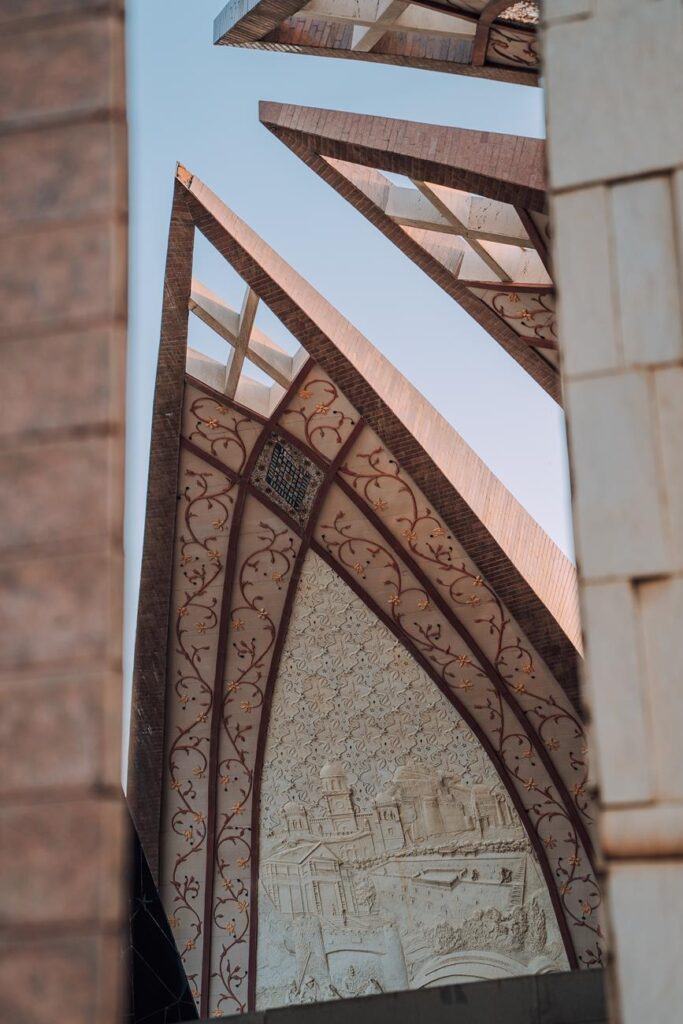
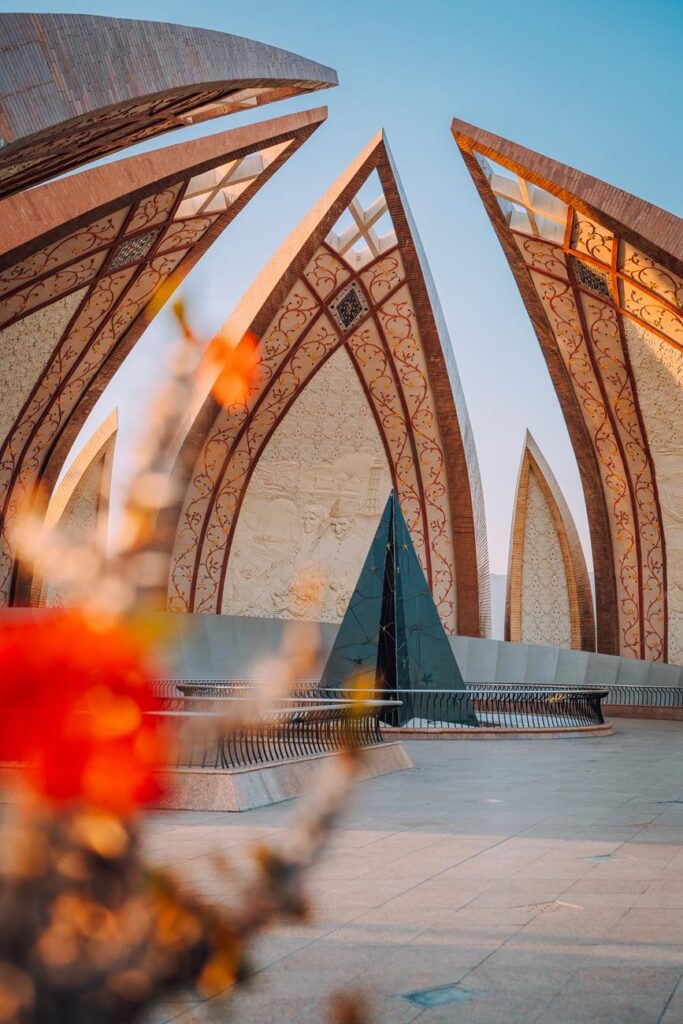
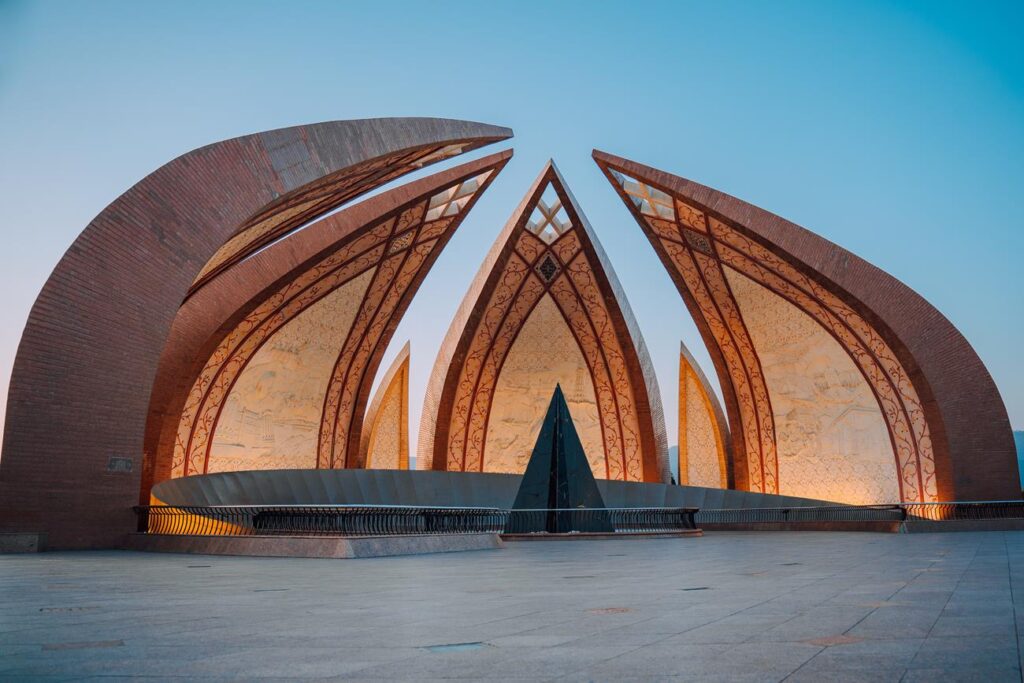
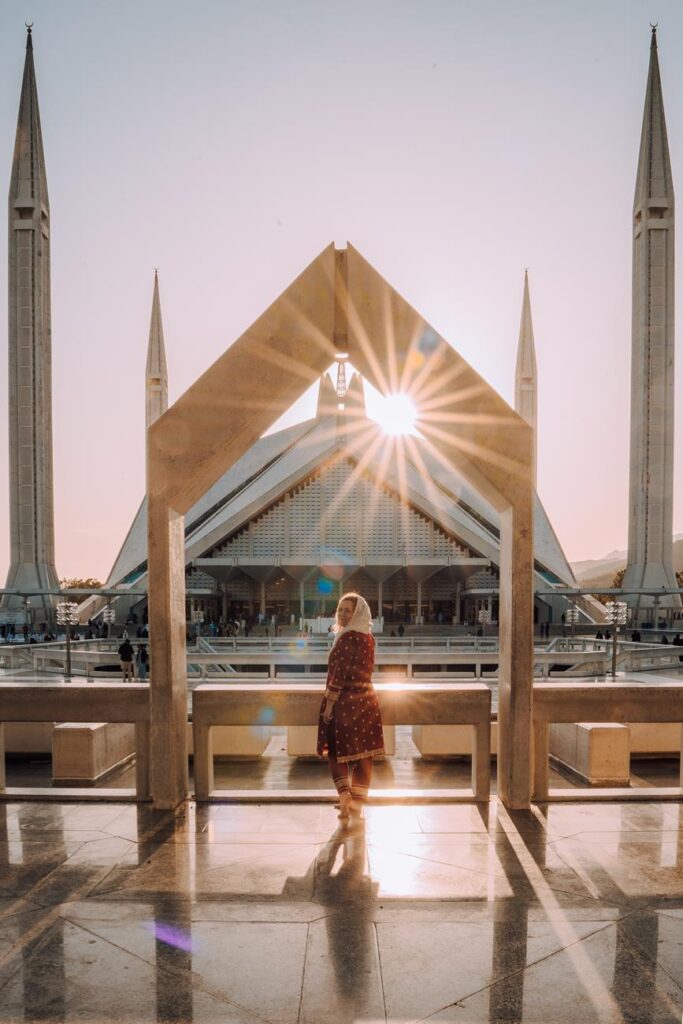
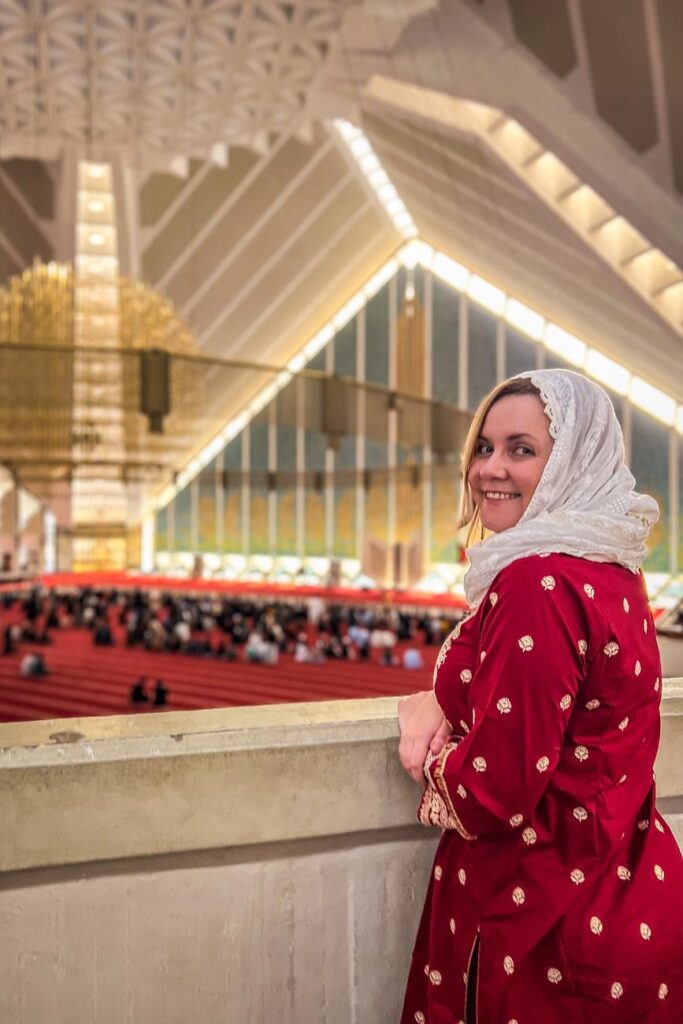
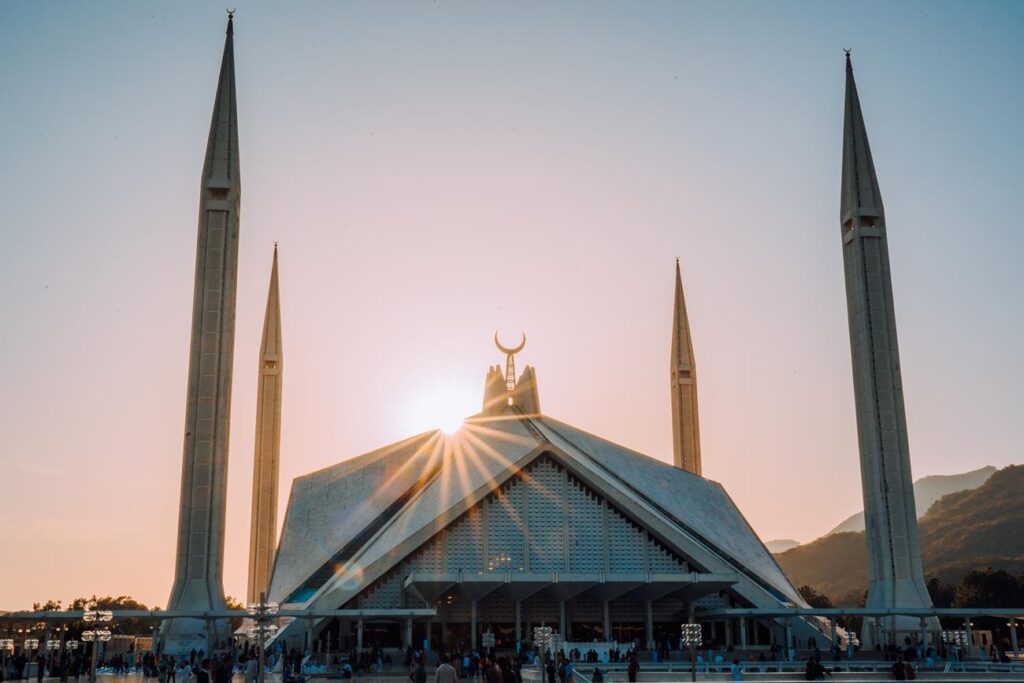
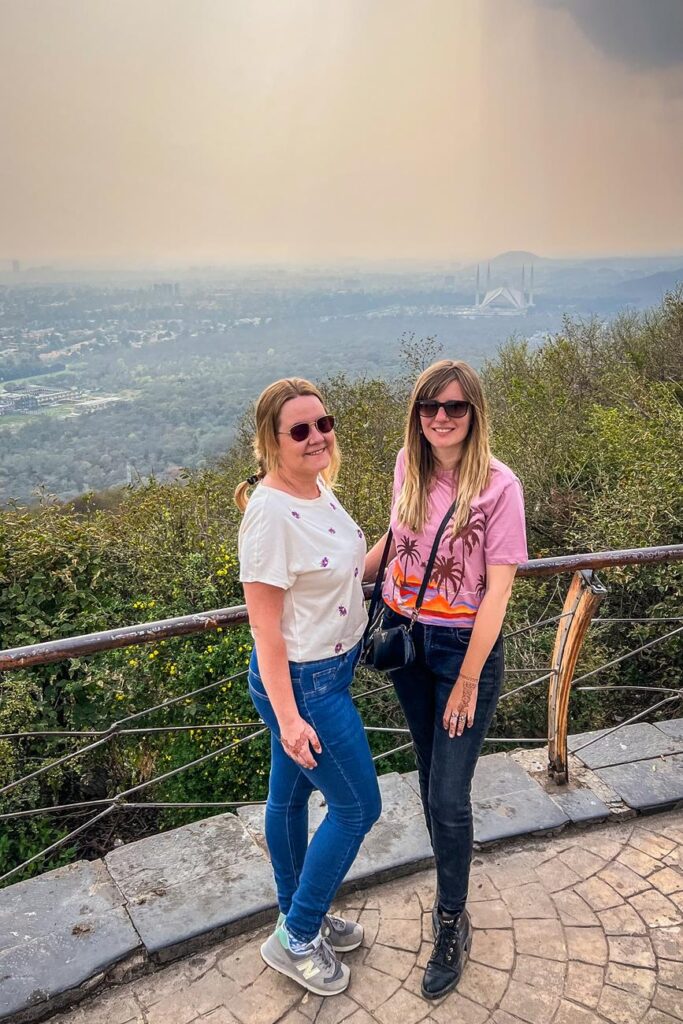
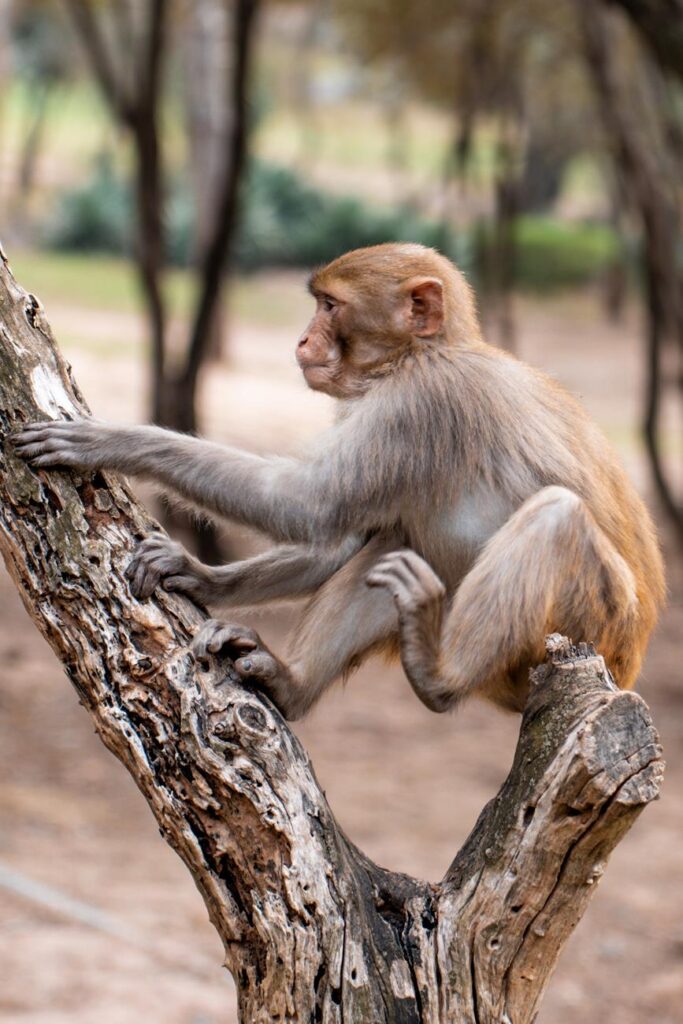
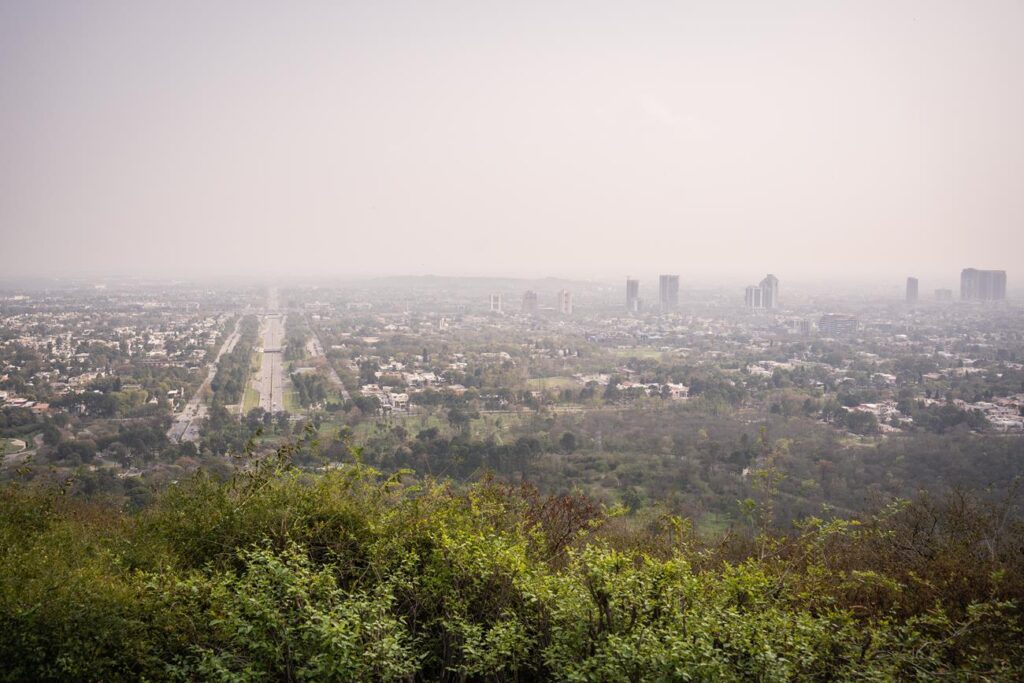
Lahore
Lahore is the second most populous city in Pakistan and one of the largest cities in the world. It is home to about 12 million people and is known for its numerous historical monuments. Arriving from Islamabad, you might be surprised at how different the two cities are from each other. Islamabad is orderly, while Lahore is a city where you can expect huge chaos, which is incredibly interesting.
What’s worth seeing in Lahore?
- Lahore Fort, built in the 16th century during the Mughal dynasty, combines elements of Hindu, Islamic, and Persian architecture. Sheesh Mahal, or the Palace of Mirrors, is a place within the fort, built with a thousand mirrors at the request of Emperor Shah Jahan, who wanted to surprise his wife Mumtaz Mahal. This palace has been inscribed on the UNESCO list.
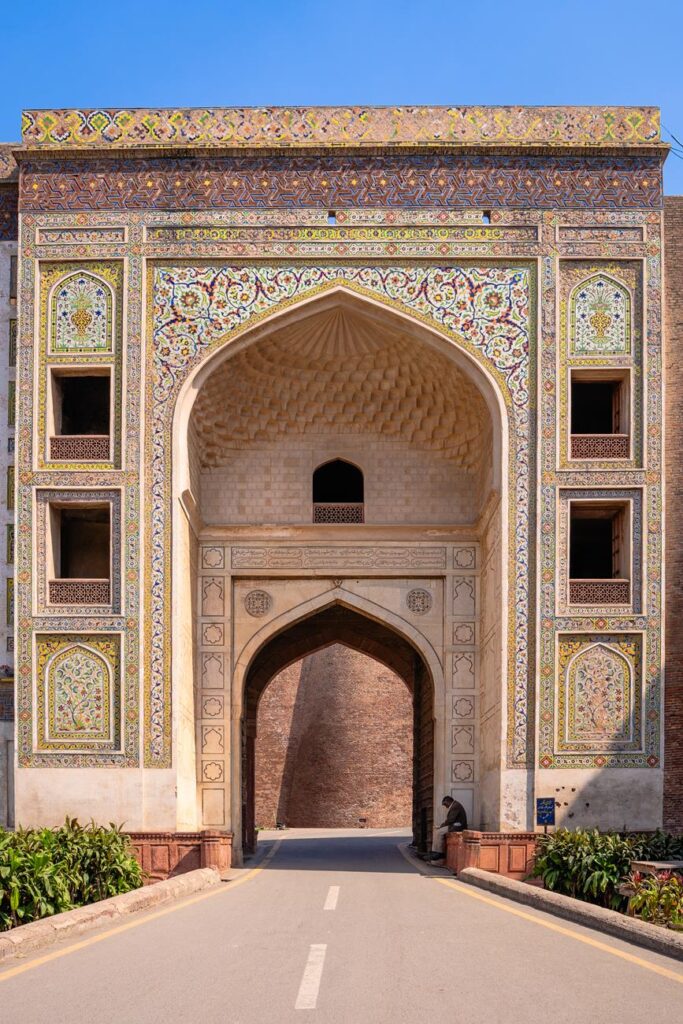
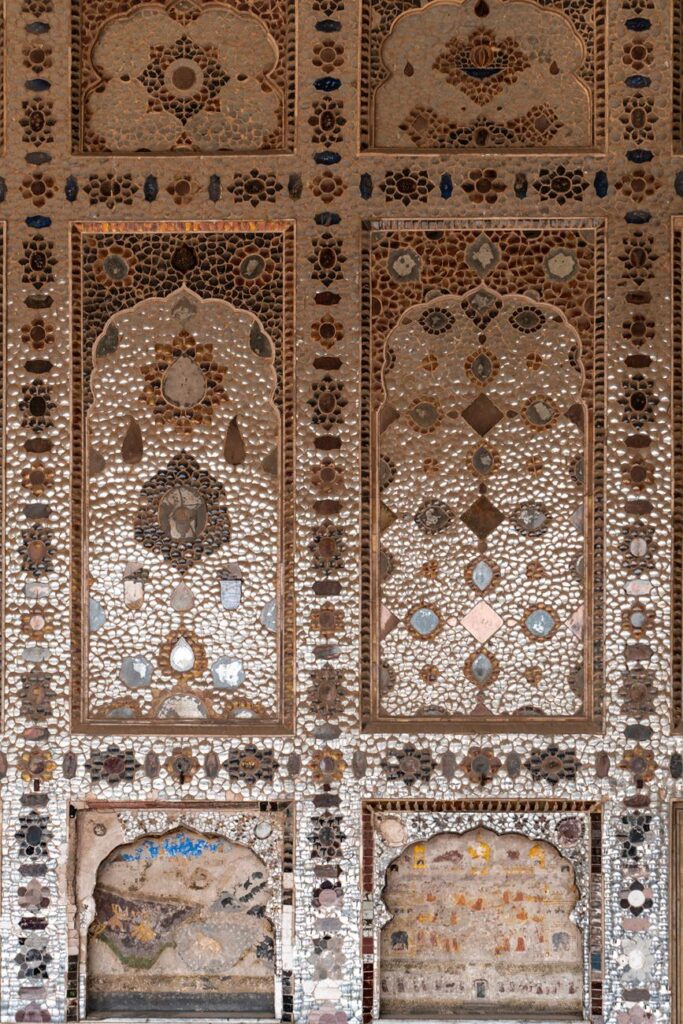
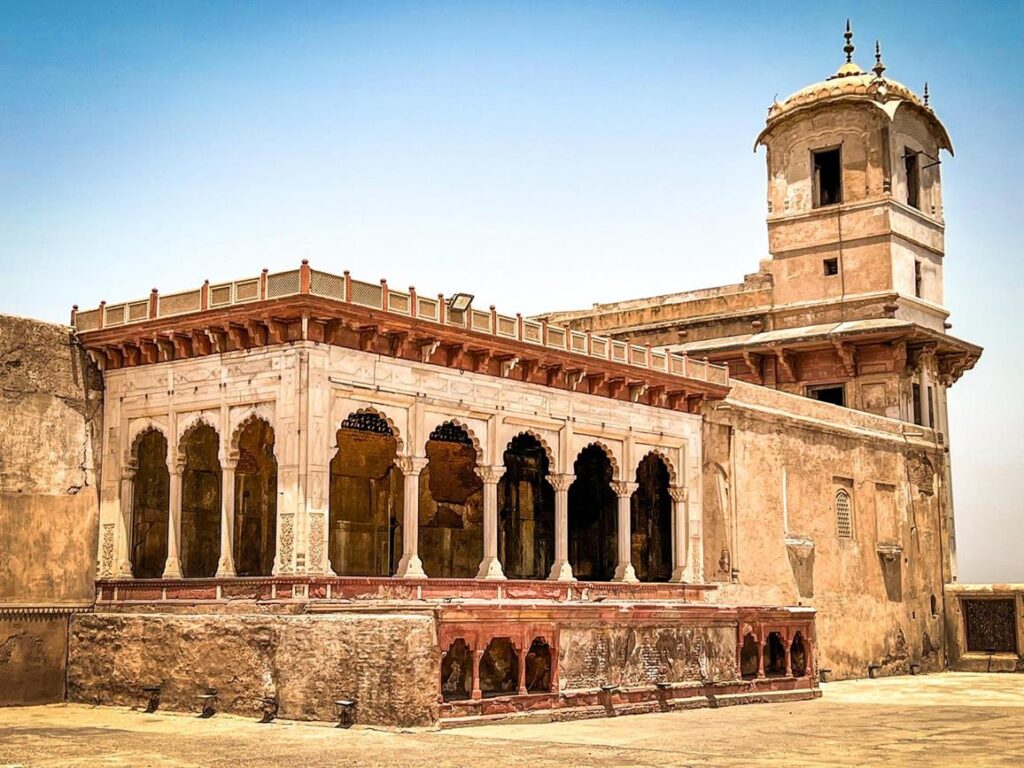
- Badshahi Mosque, built in the 17th century during Aurangzeb’s reign. It is still one of the largest in the world. Although it has not always served as a place of worship, its impressive architecture of red sandstone and marble elements delights visitors.
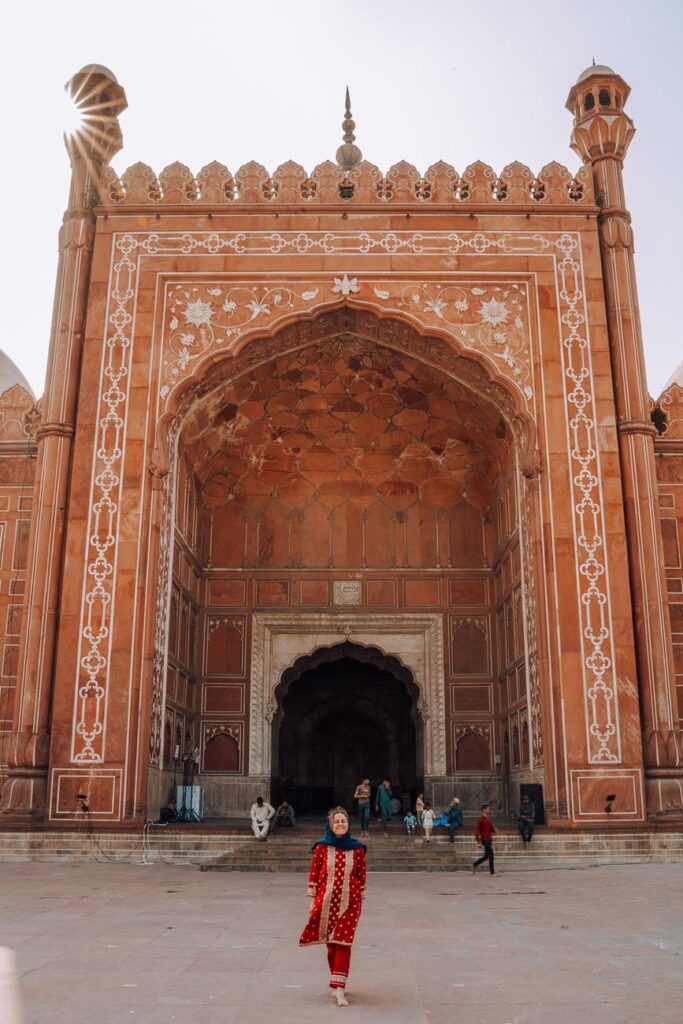
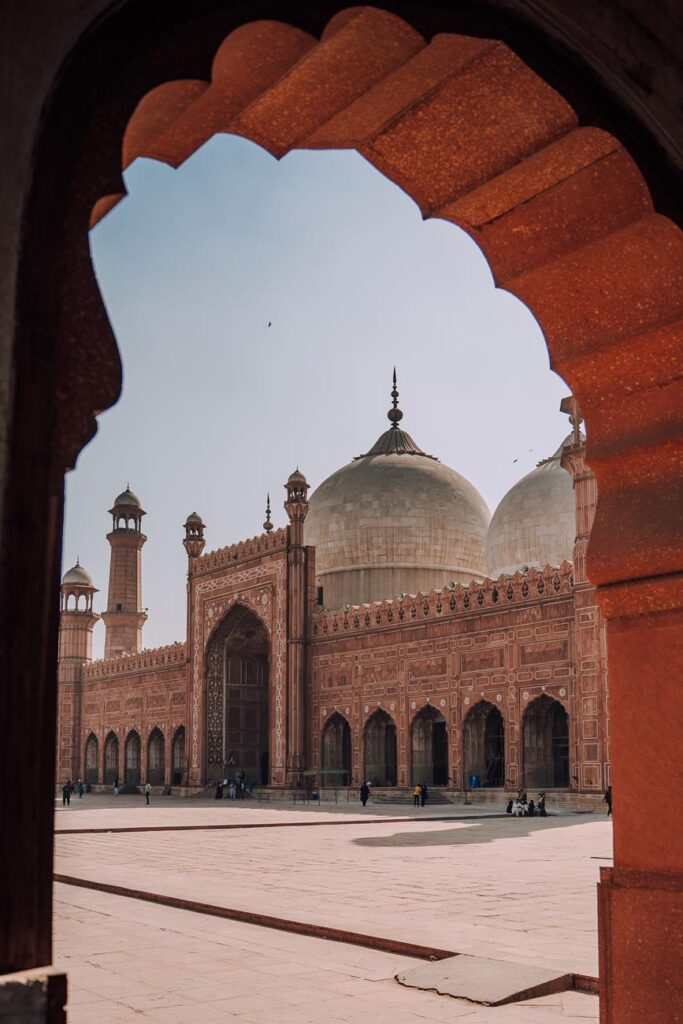
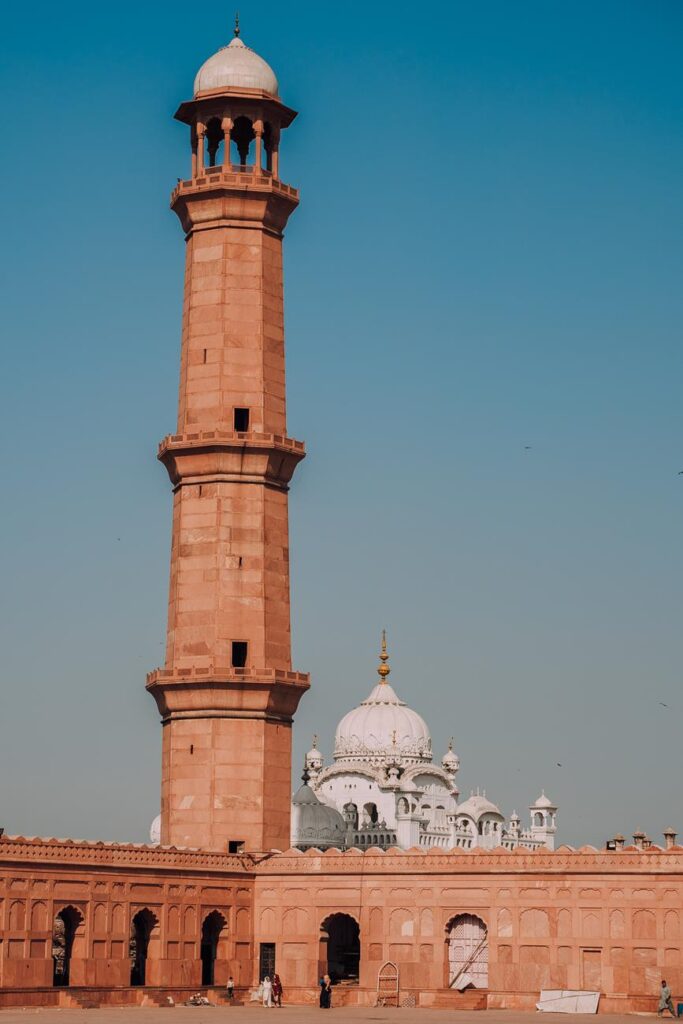
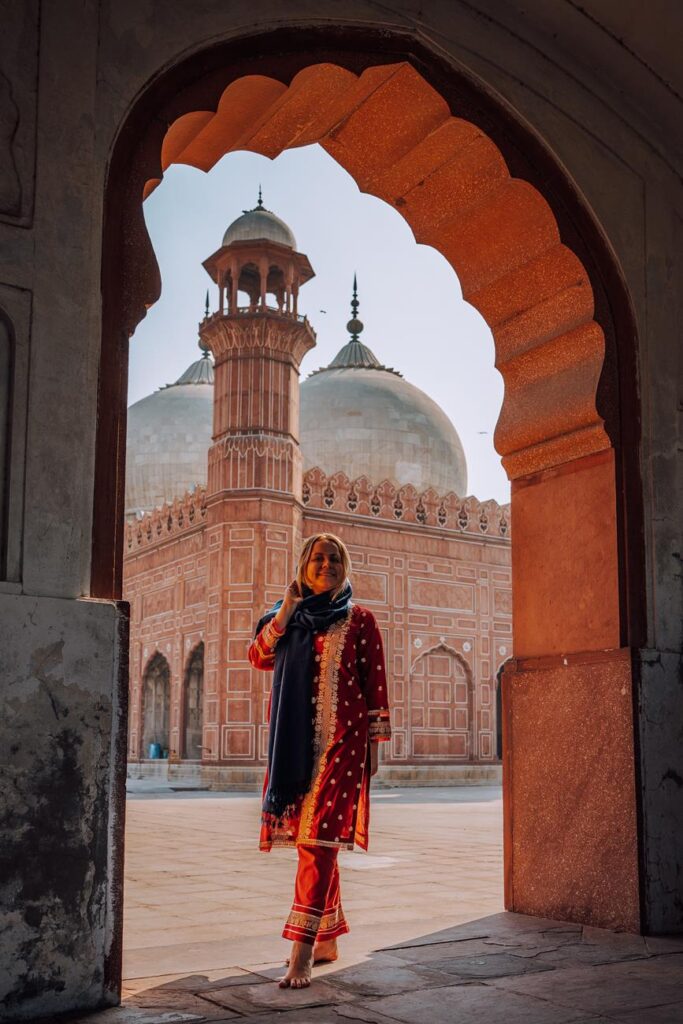
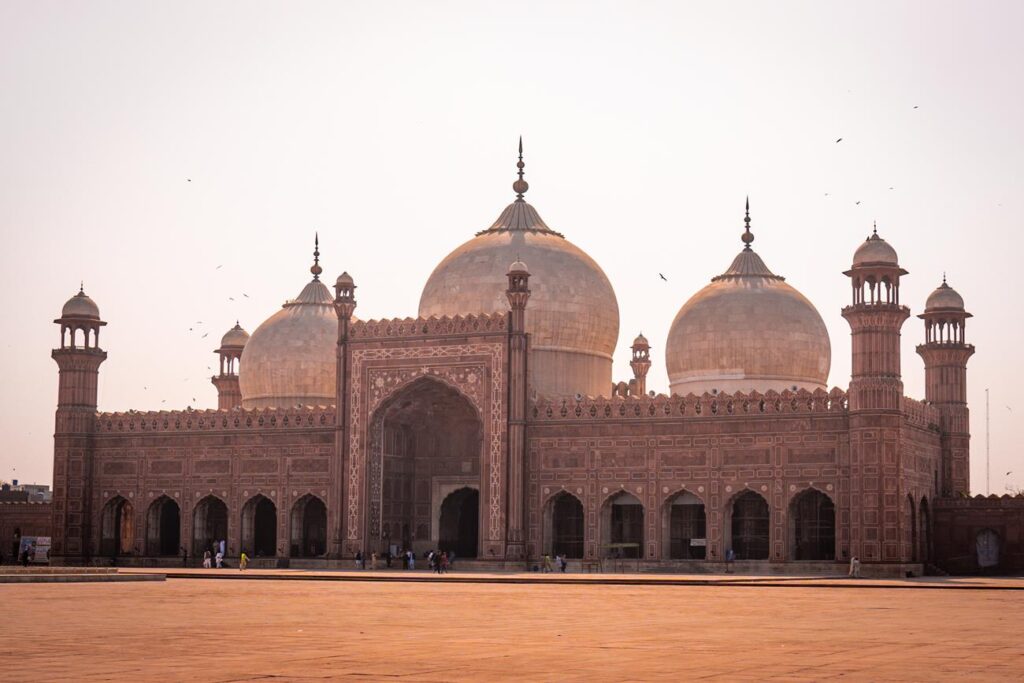
- Lahore’s Old City also hides other beautiful monuments, such as Wazir Khan Mosque, Shahi Hammam Turkish Baths, and many others.
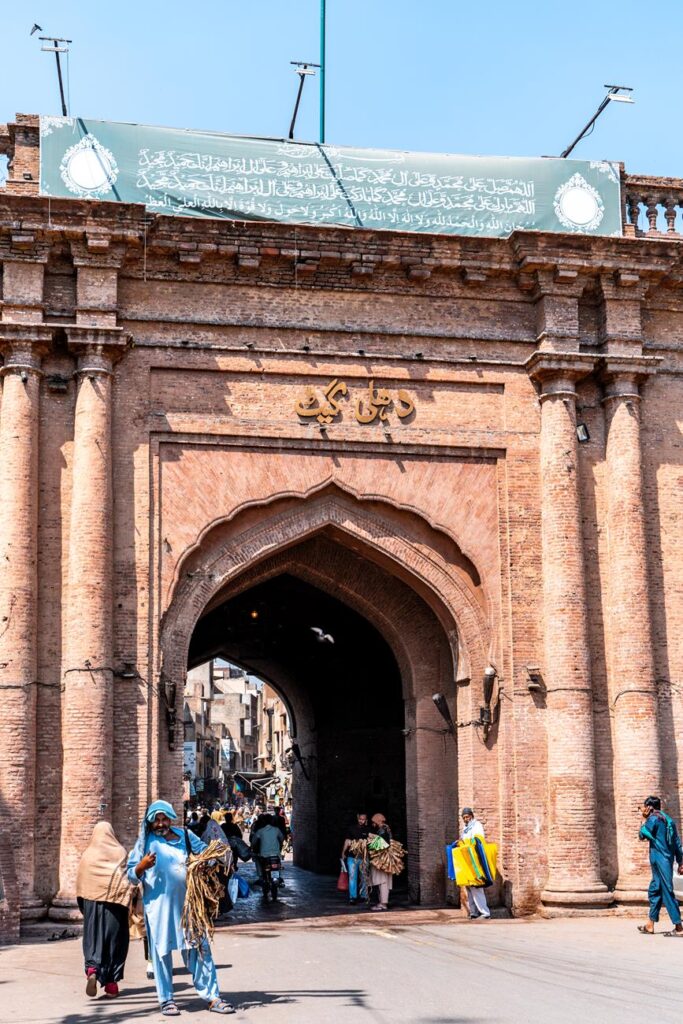
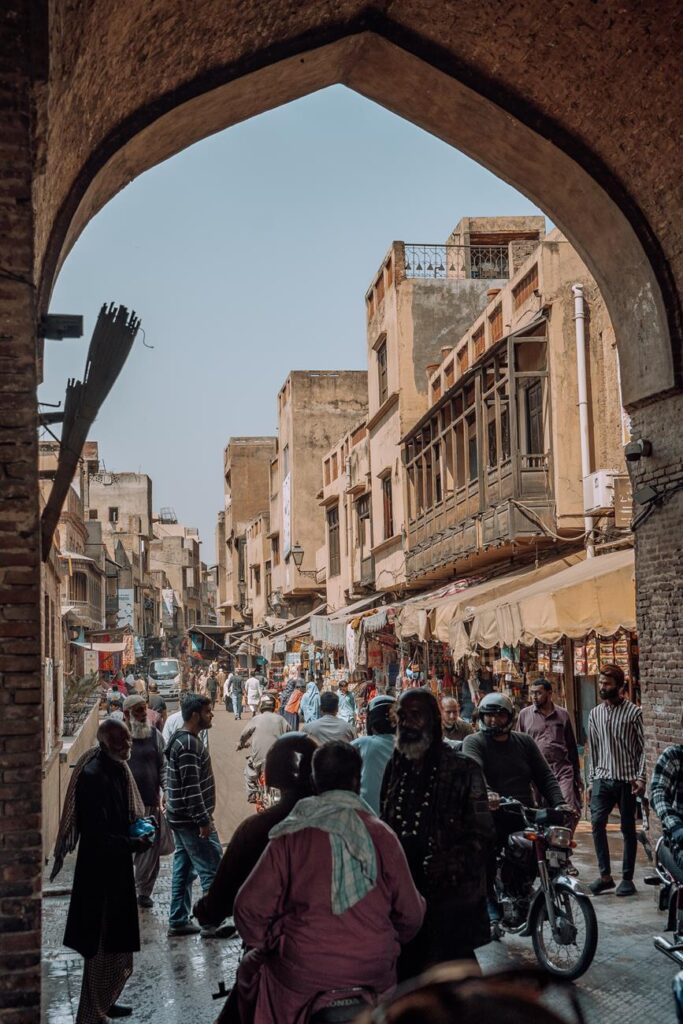
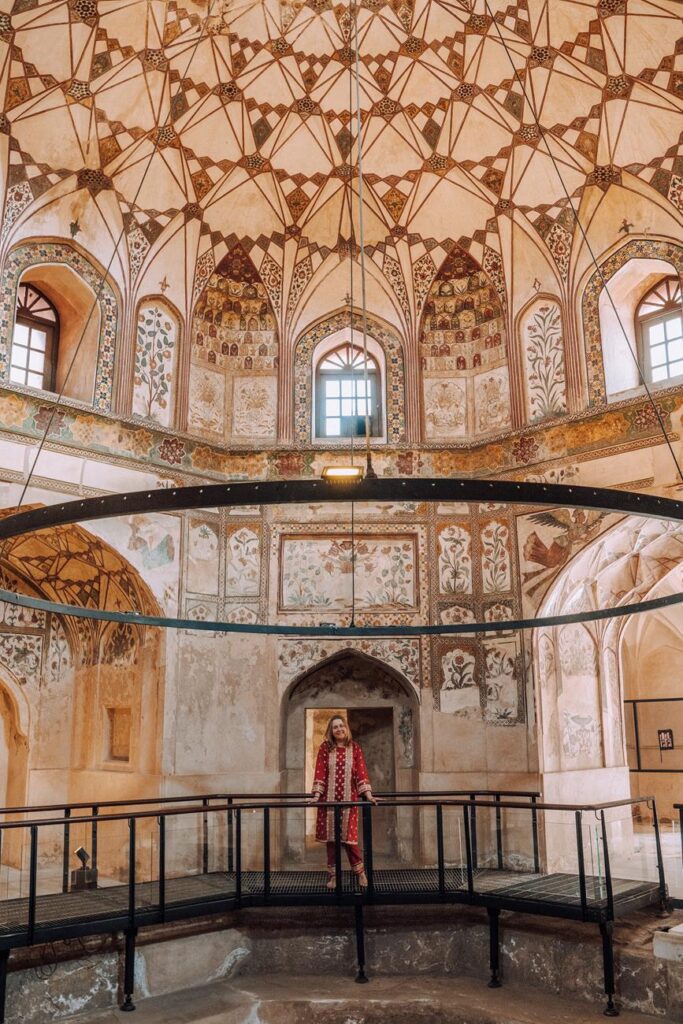
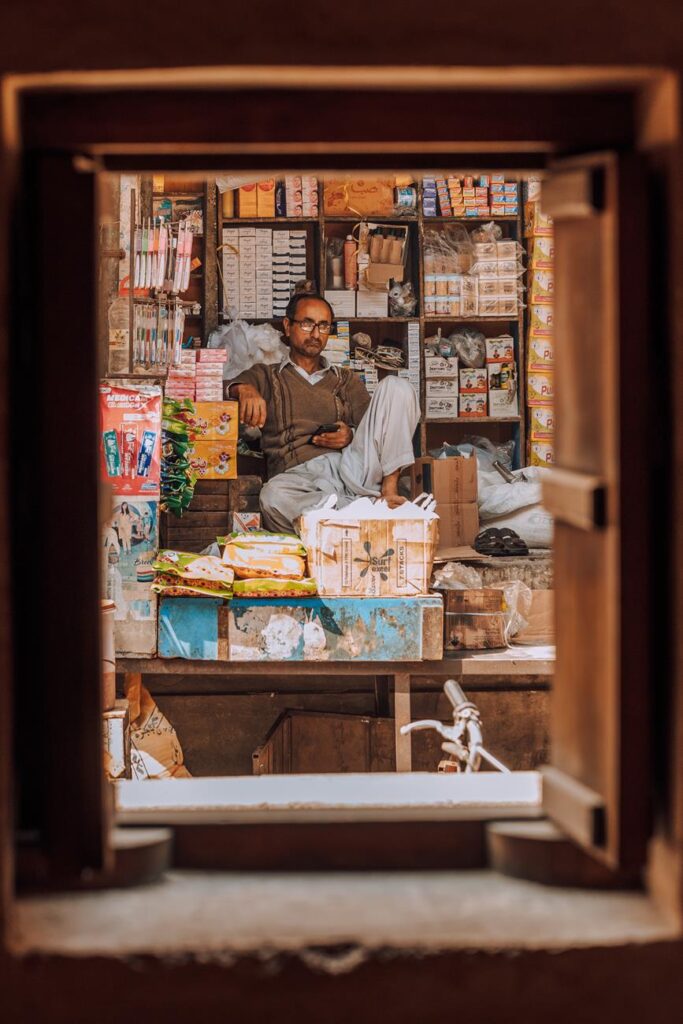
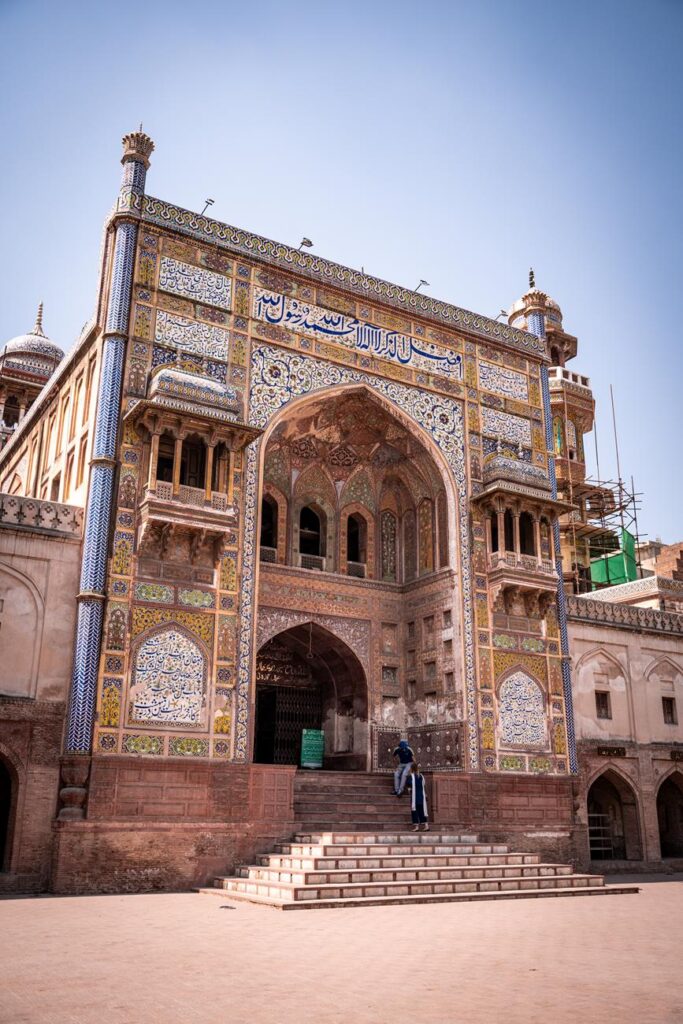
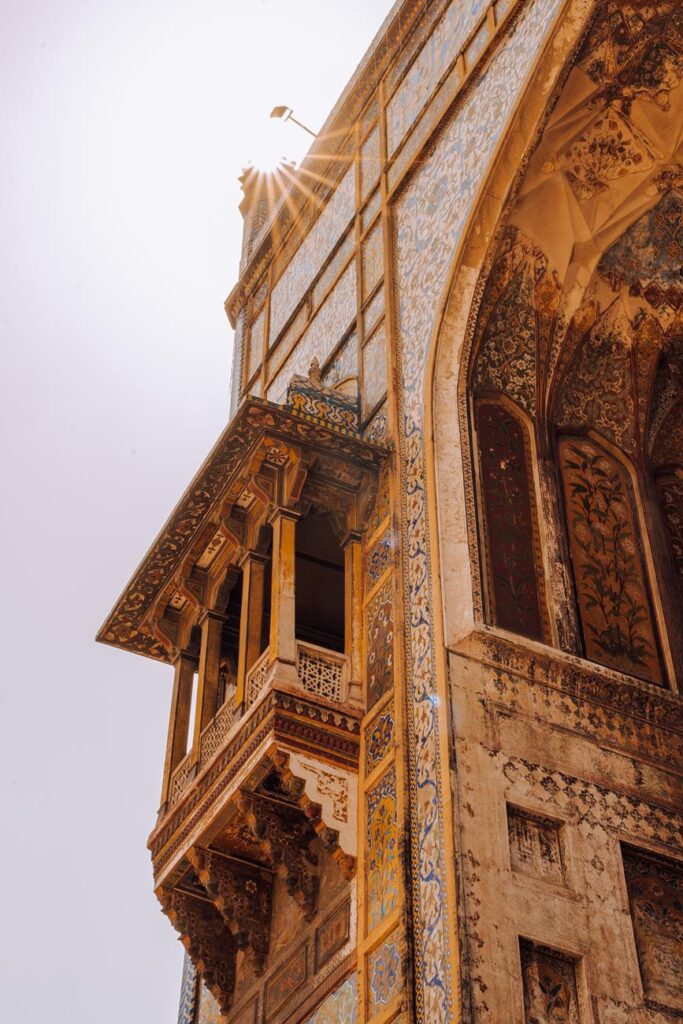
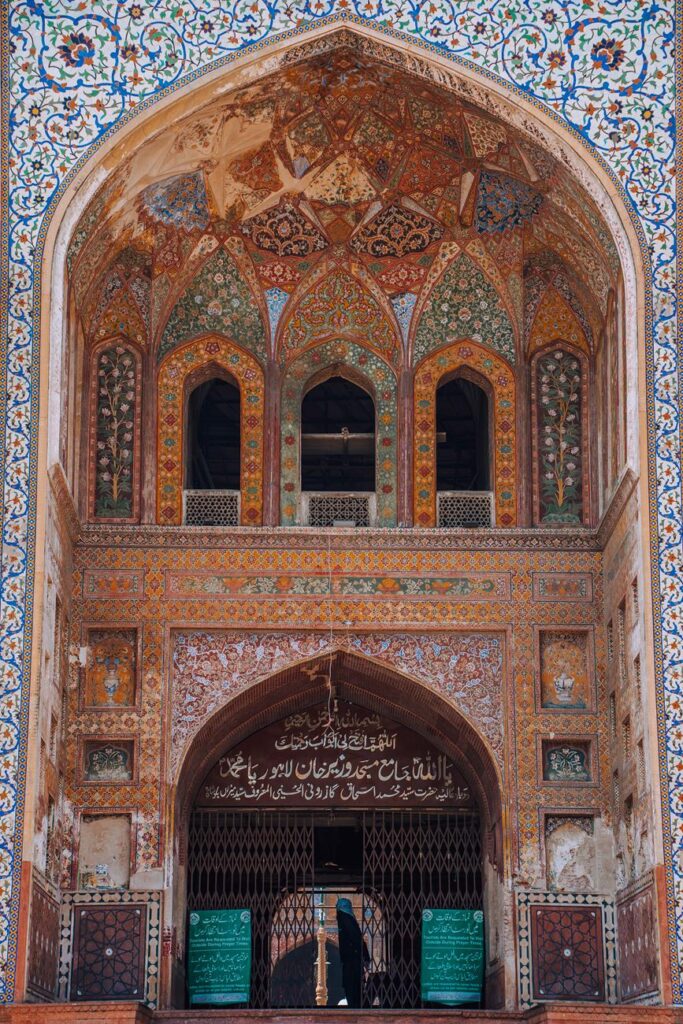
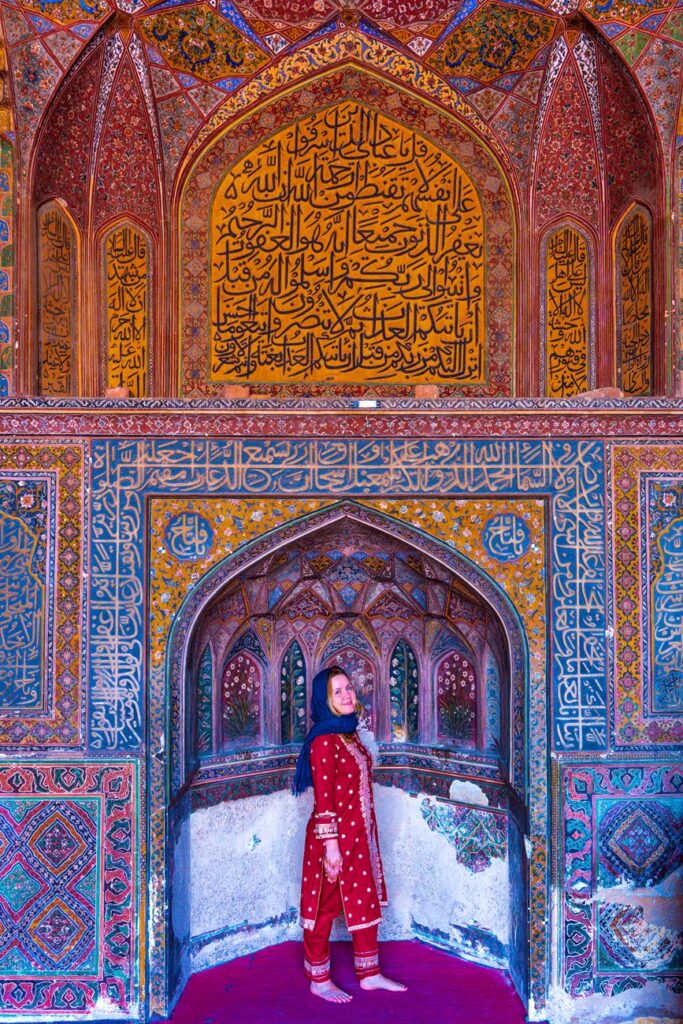
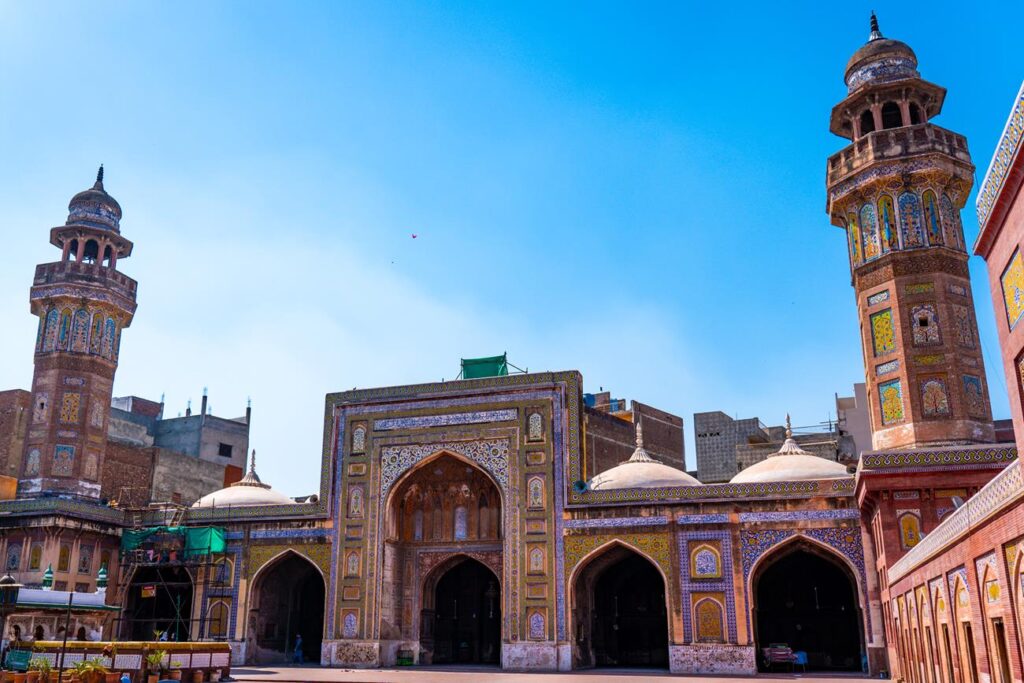
Recommended accommodation: LOKAL Rooms x Lahore (Cavalry)
See also: What to See in Lahore, the Second Largest City in Pakistan
Khewra Salt Mine
The Khewra salt mine is one of the oldest salt mining sites in the world. Interestingly, pink Himalayan salt is mined there. The Khewra salt mine is not only an important source of salt but also a unique tourist attraction.
The Khewra salt mine is still active, but of course, specially prepared places for tourists are visited. You can admire huge salt chambers of various shapes and sizes, salt lakes, and sculptures, and there’s even a place for prayer.
It’s worth taking the train inside because the walk is quite long (about 2 kilometers one way).
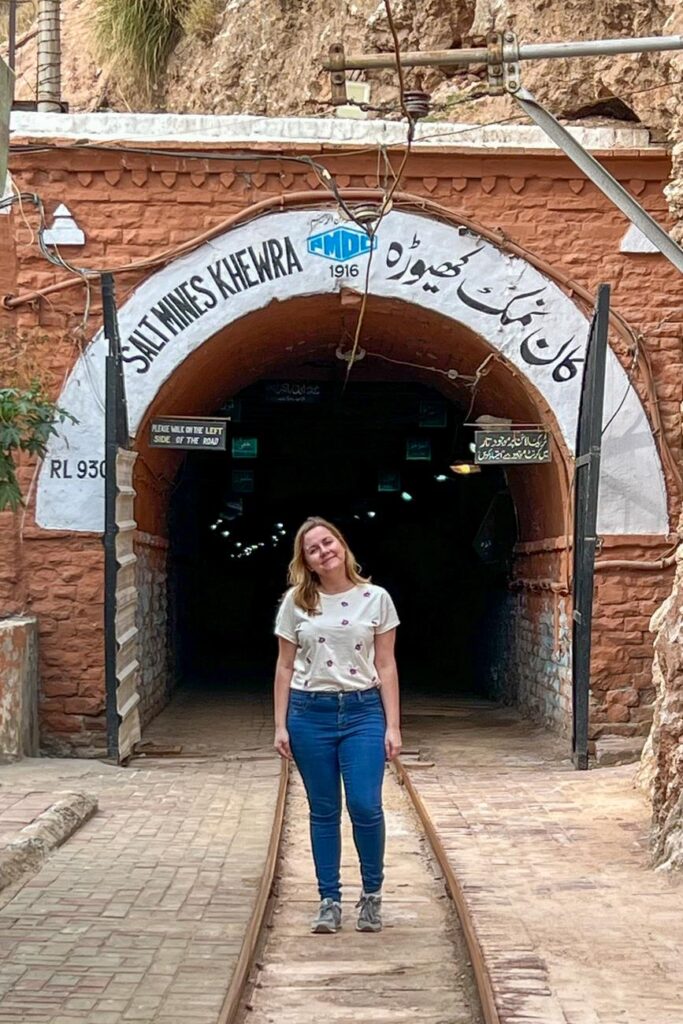
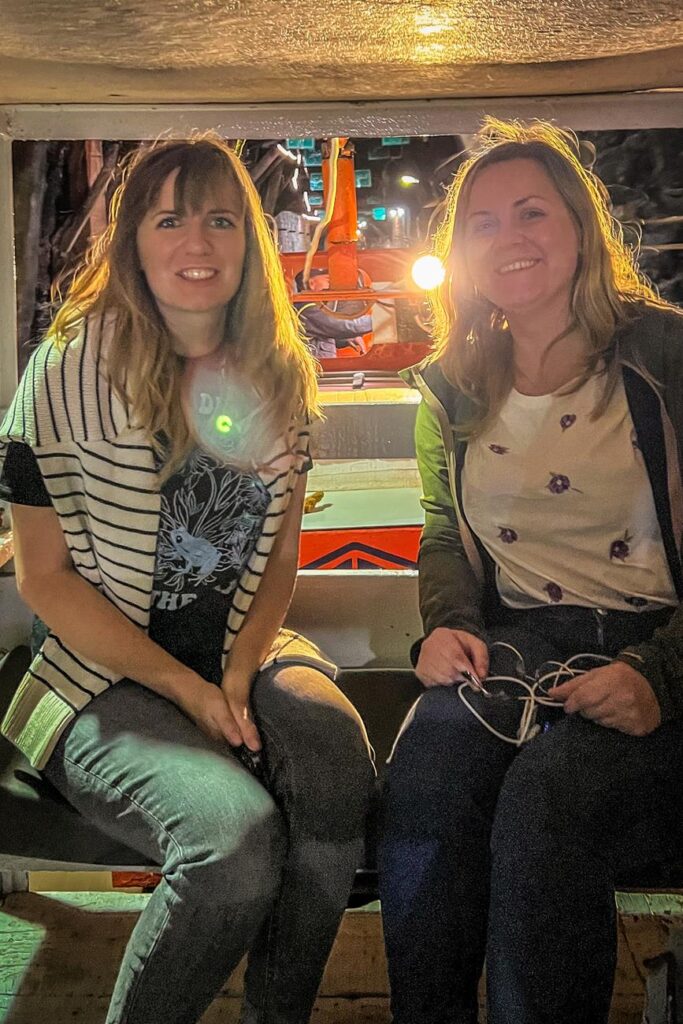
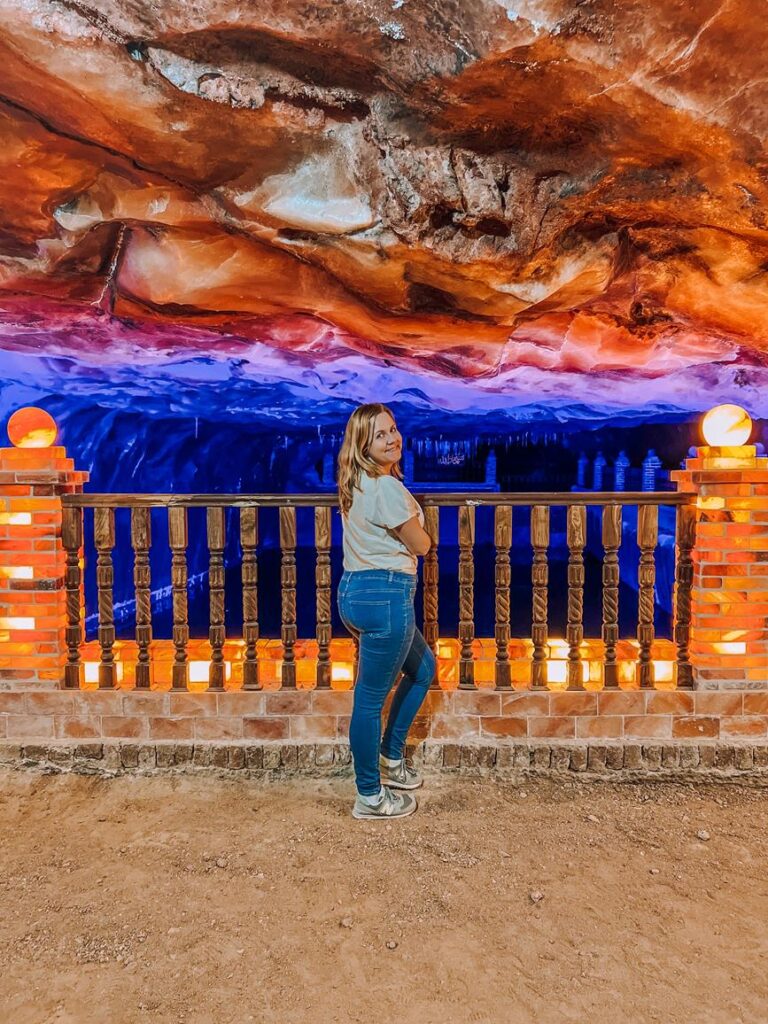
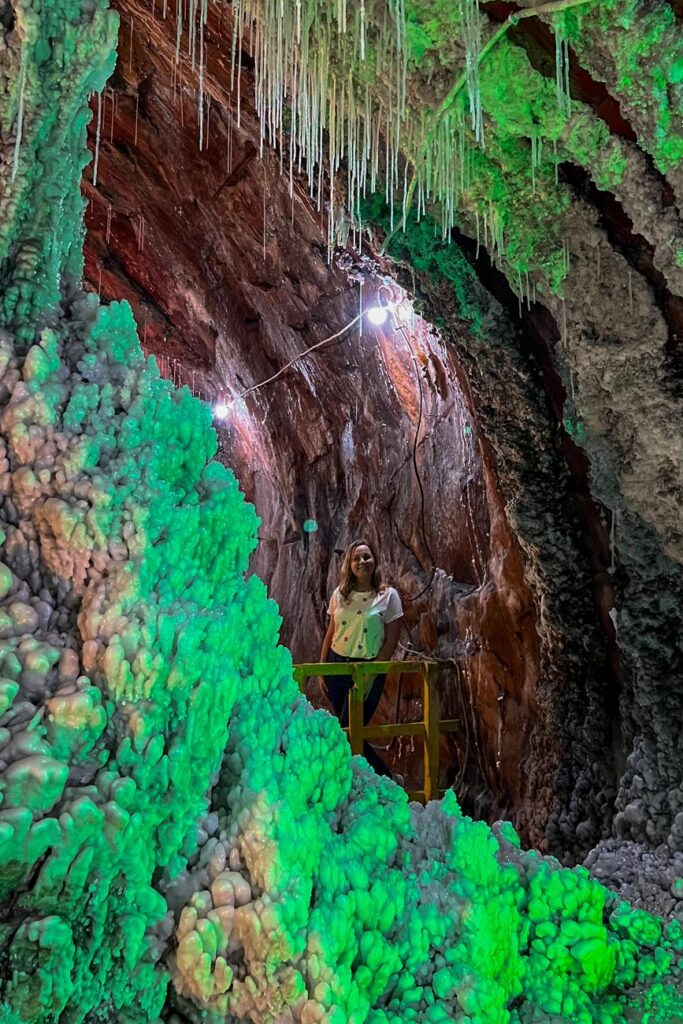
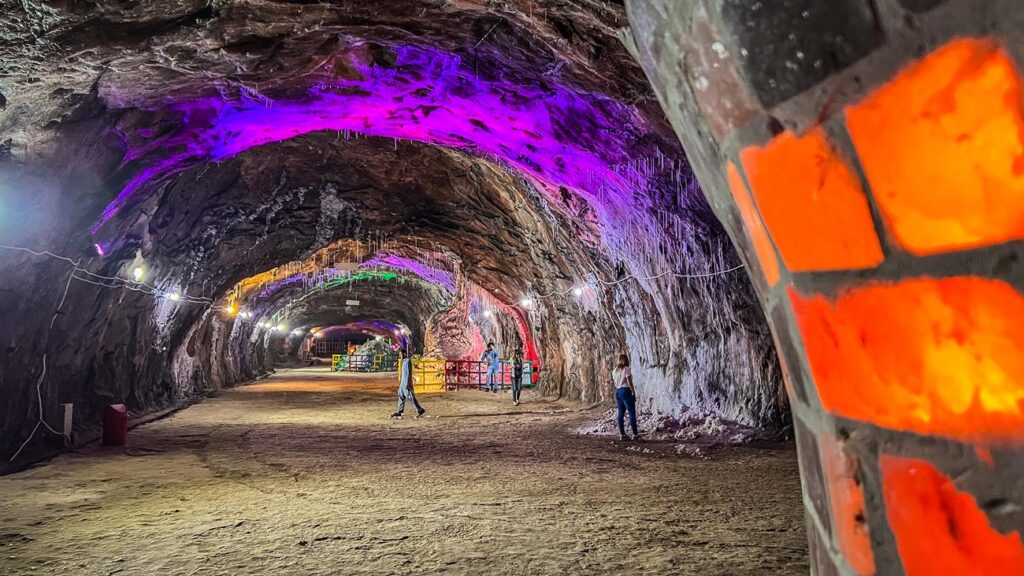
Wagah Border Ceremony
Twenty-four kilometers from Lahore, an extraordinary ceremony takes place every day at the Wagah border, the only road connecting Pakistan with India. This historical ceremony dates back to 1959 and is an incredible display of military precision, conducted by the Pakistan Rangers and the Indian Border Security Force. The ceremony continues
The show starts in the afternoon (check the hours before arrival because it changes) and lasts about 40 minutes. You also need to sign up in advance for entry, providing your details along with passport numbers.
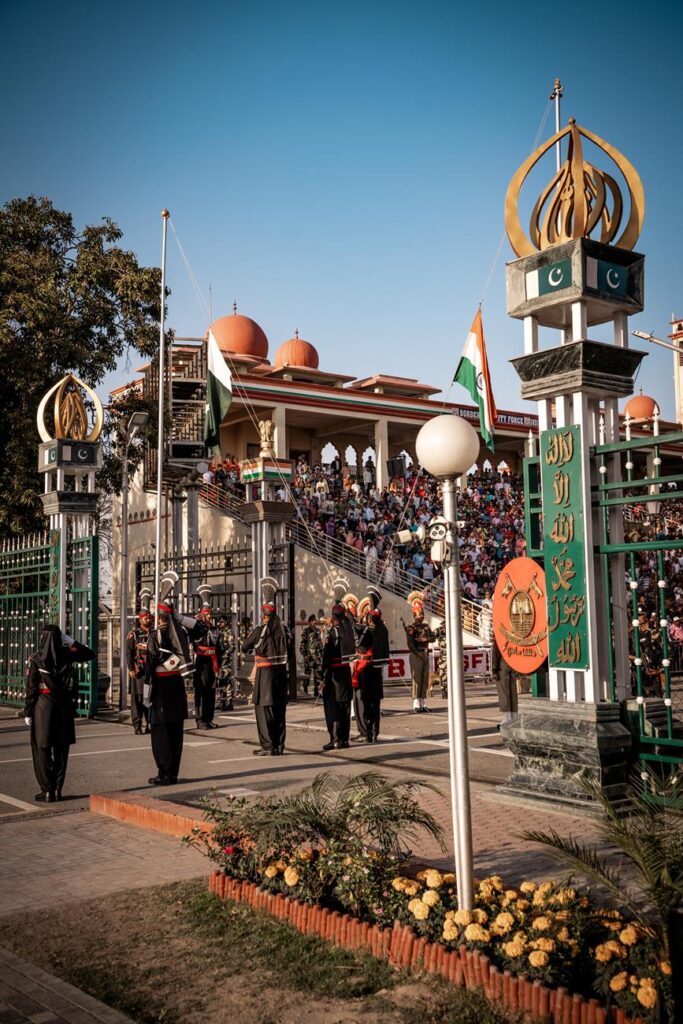
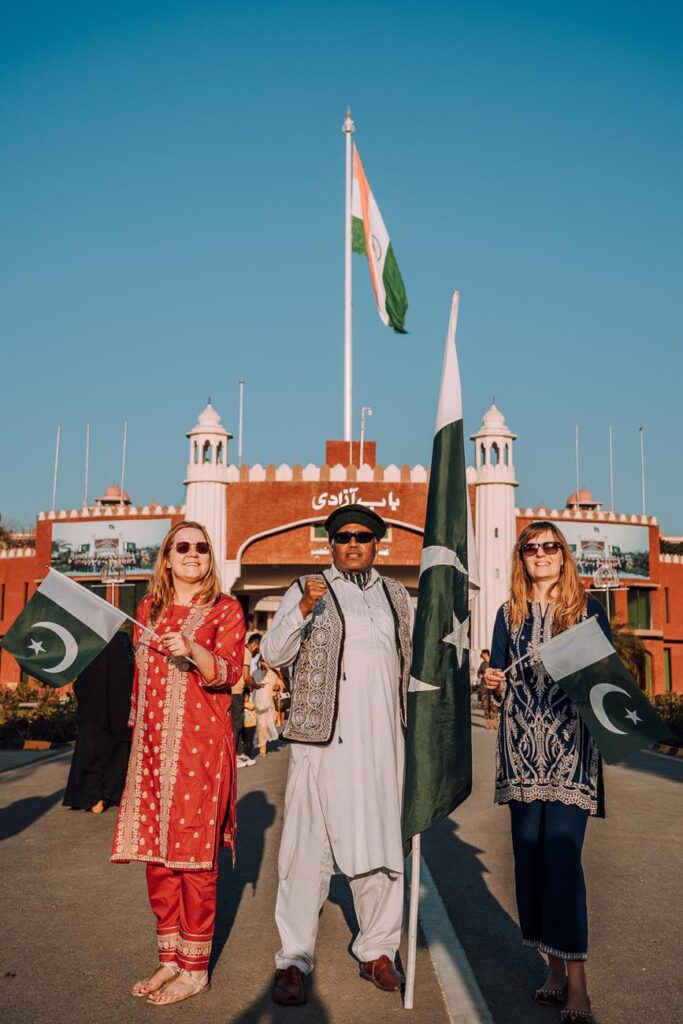
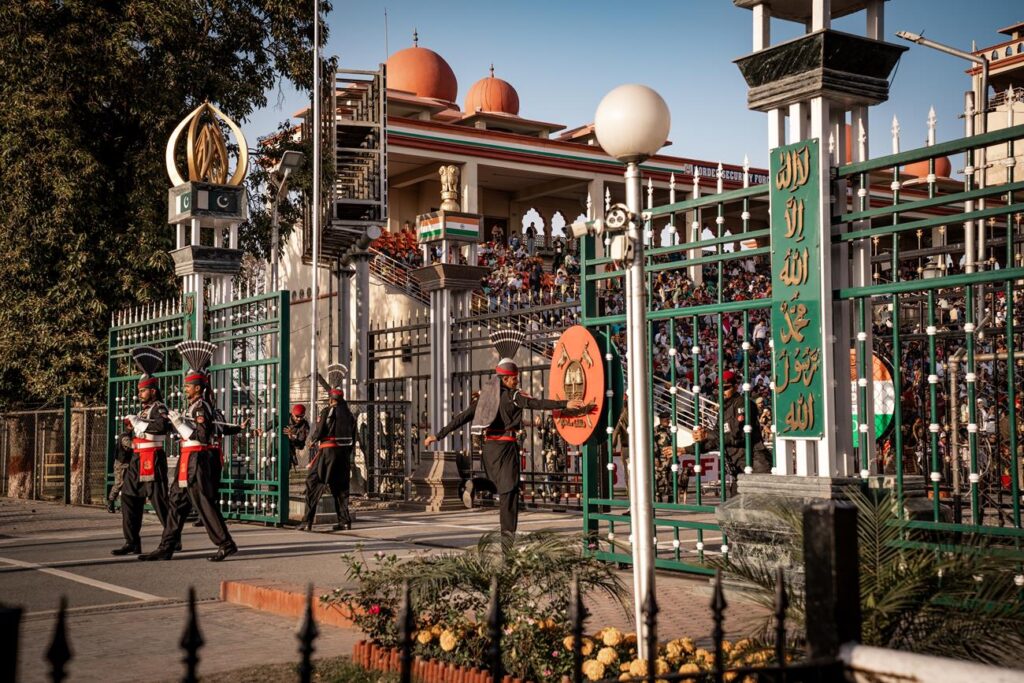
Katas Raj Temple
In the past, this area was also inhabited by Hindus. That is, still a small number of followers of this religion live in Pakistan, but there were more of them before the creation of Pakistan. A relic from that period is the Shri Katas Raj Temples complex. The complex consists of several Hindu temples, surrounded by gardens and ponds, the most important of which, the Katas pond, is considered sacred by Hindu worshipers. According to mythology, this pond was created from the tears of the god Shiva after the death of his wife Sati.
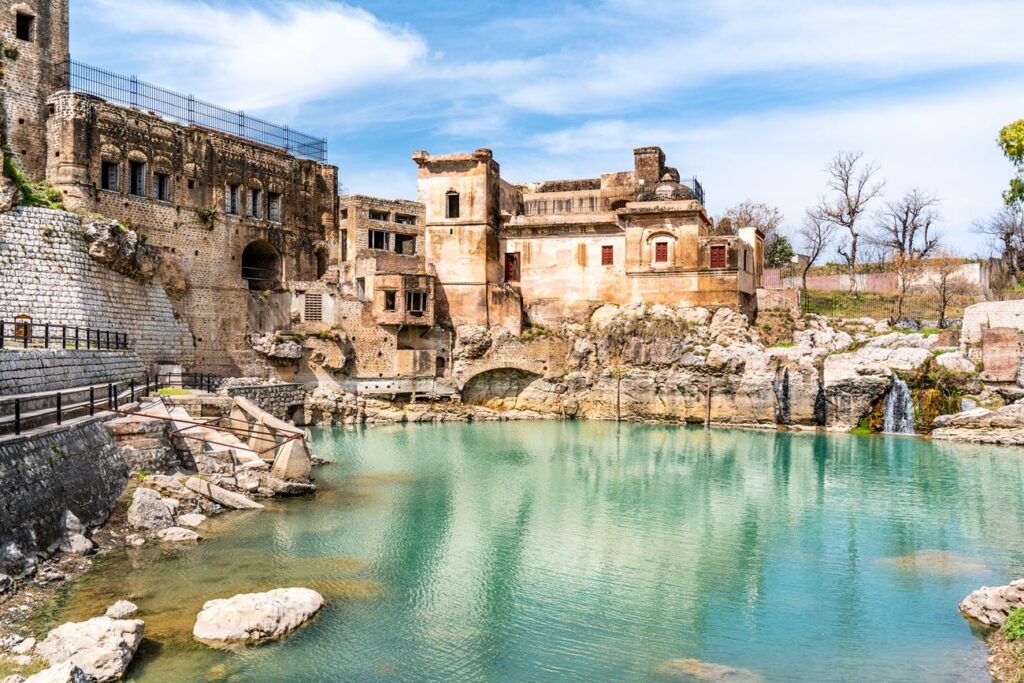
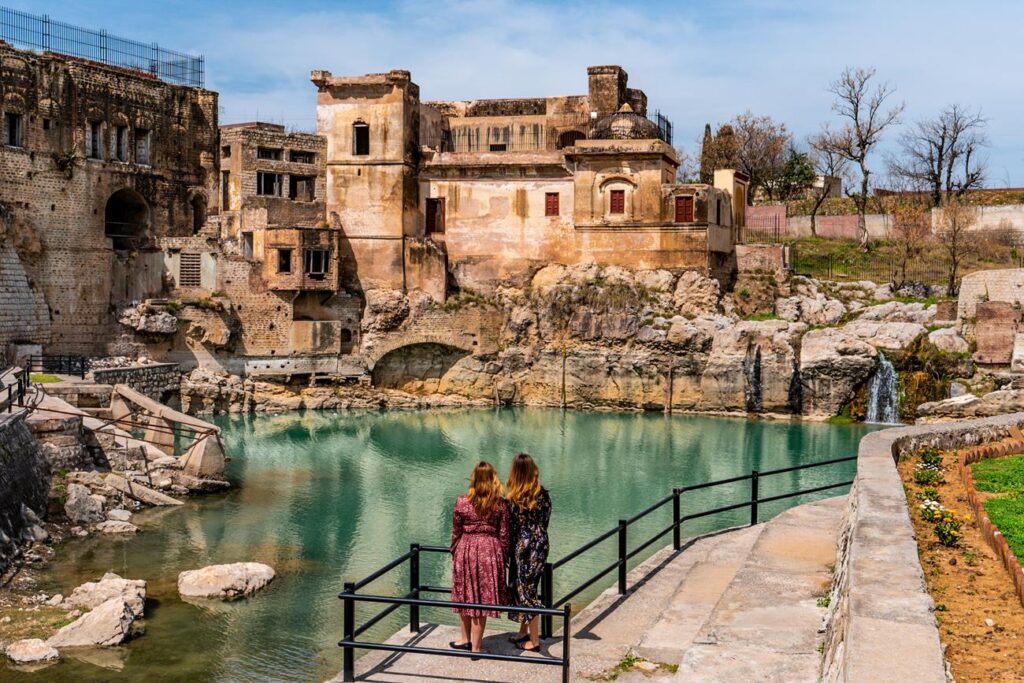
Flight Islamabad – Skardu
It was an amazing experience for me. If you’re in Pakistan, it’s definitely worth it. The flight on this route offers views of really high mountains, reaching 7000 and 8000 meters above sea level. From the plane window, we were able to see the Nanga Parbat mountain. The flight is very impressive, and I can highly recommend it. I know that the route to Gilgit is also beautiful, but smaller planes are used on it, and travel in larger planes is simply more comfortable.
Below you will find attractions in Skardu and the surrounding area that we managed to see.
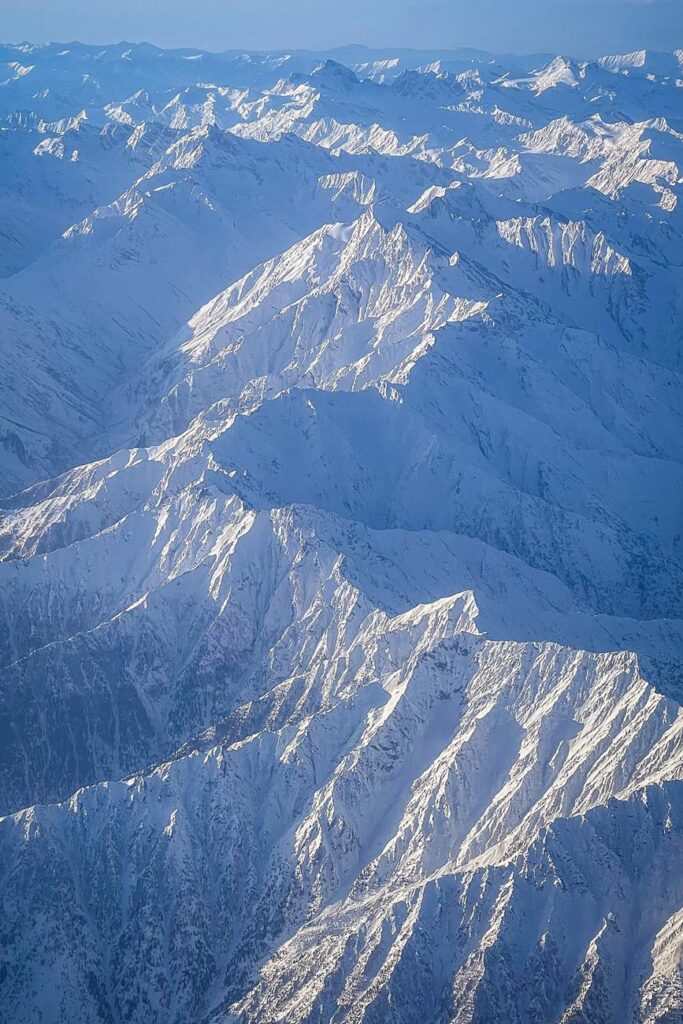
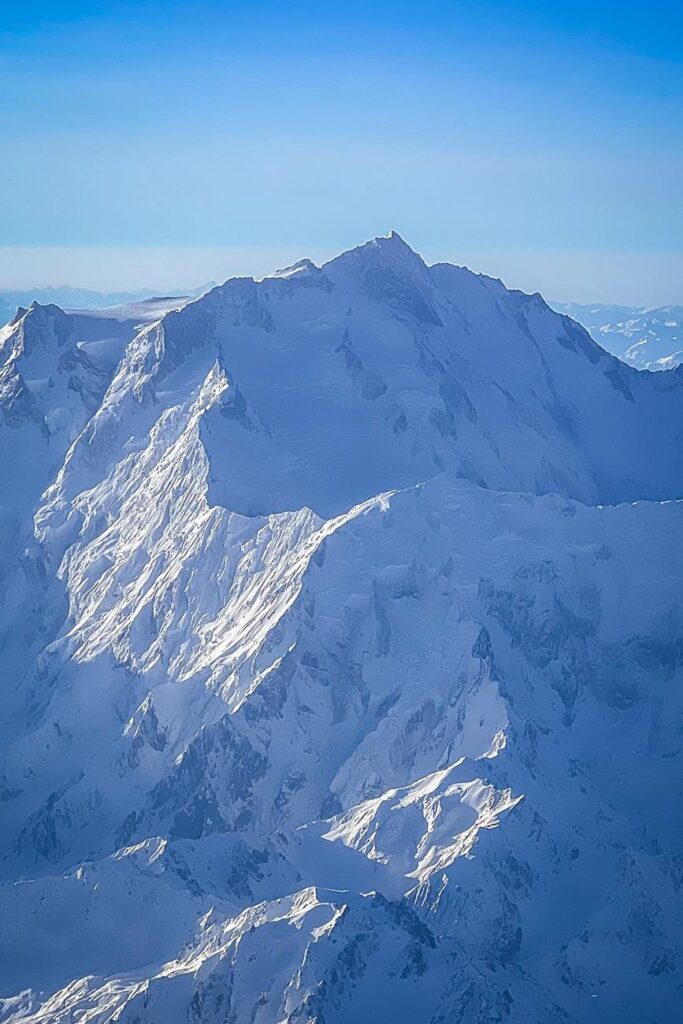
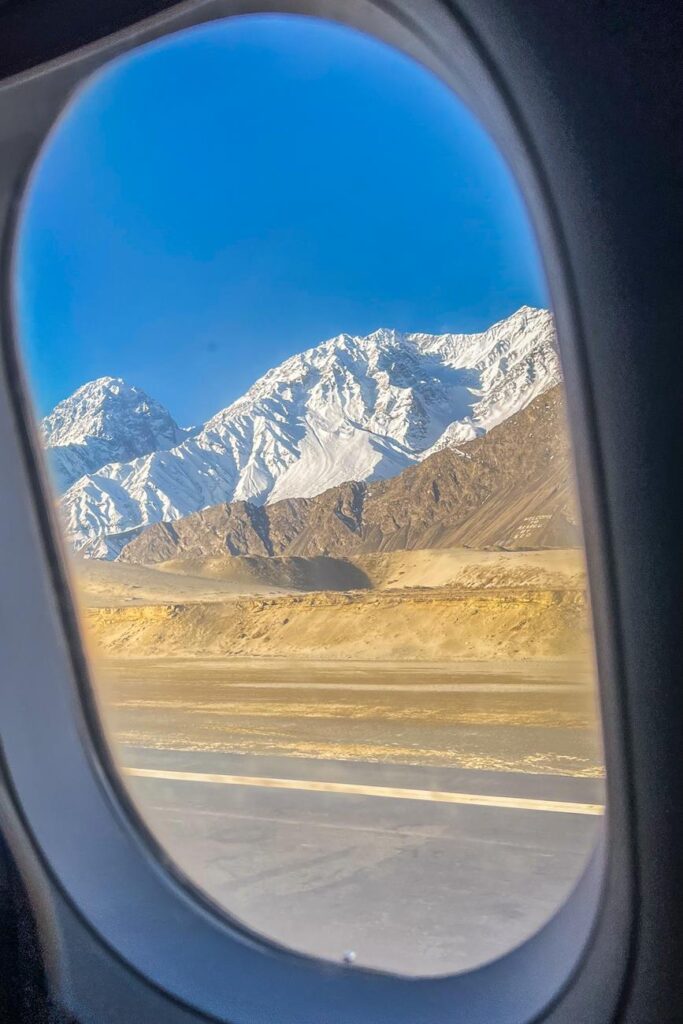
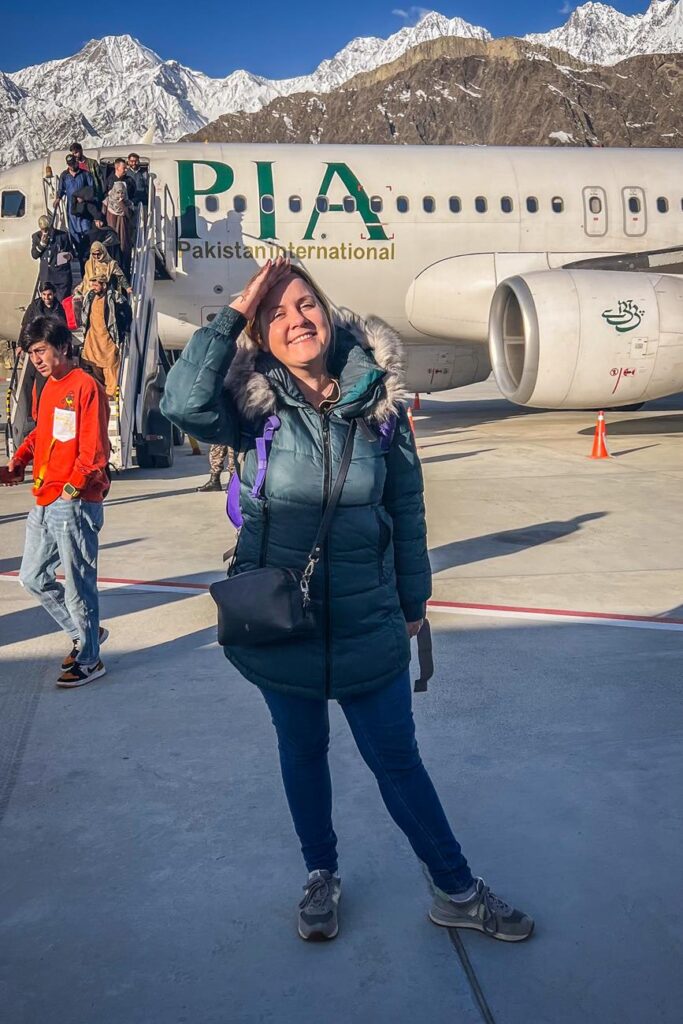
Skardu
Landing in Skardu, you will definitely focus on the mountains. However, in Skardu itself, it’s worth visiting local shops and buying spices, nuts, or sweets, for example. In addition, precious stones, which are extracted in this region, deserve attention, so be sure to visit a local jewelry store. In my opinion, this is the best souvenir you can bring from Pakistan.
Recommended accommodation: Dynasty Hotel Skardu
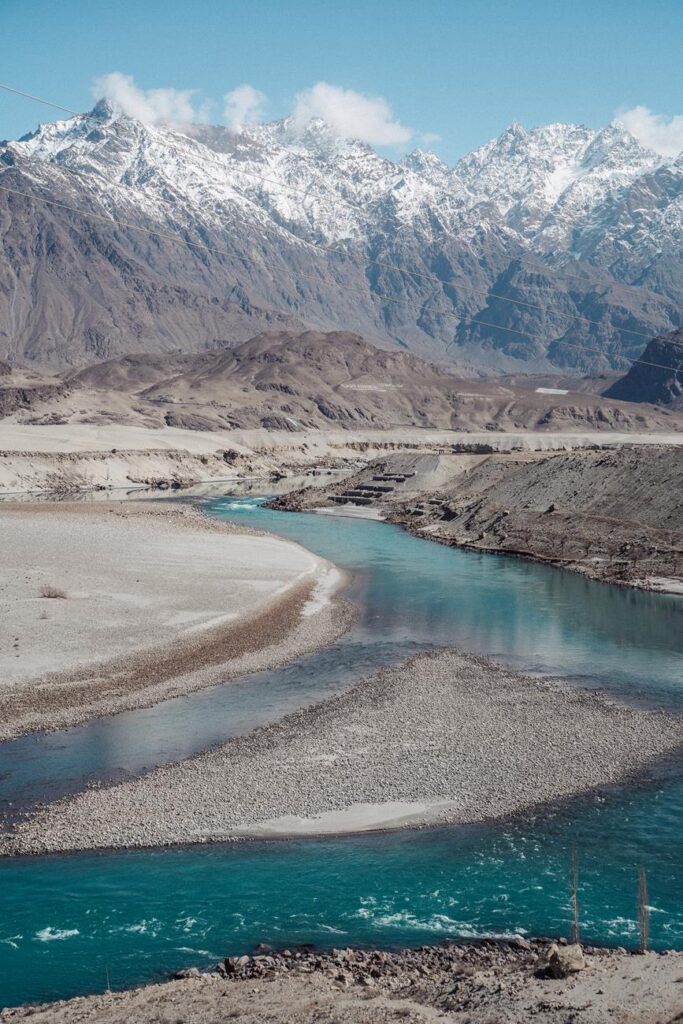
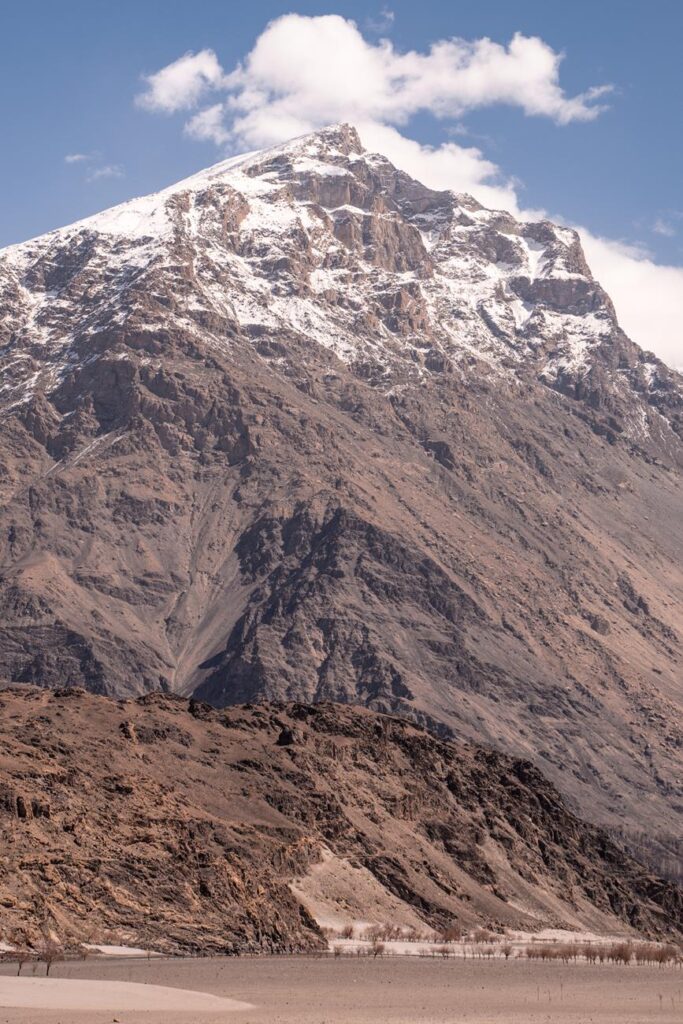
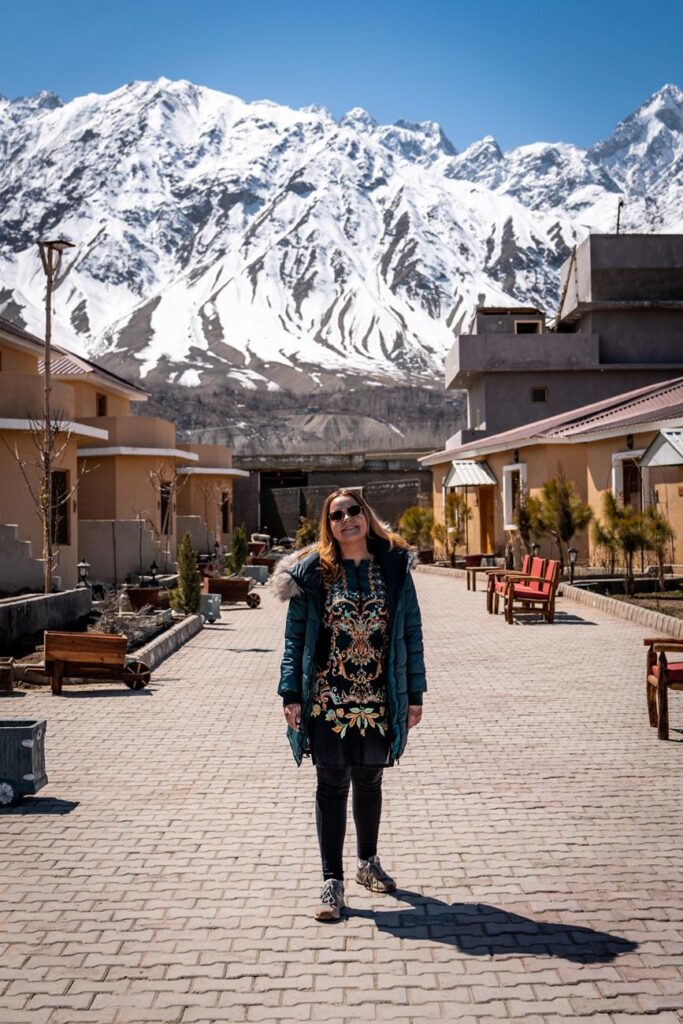
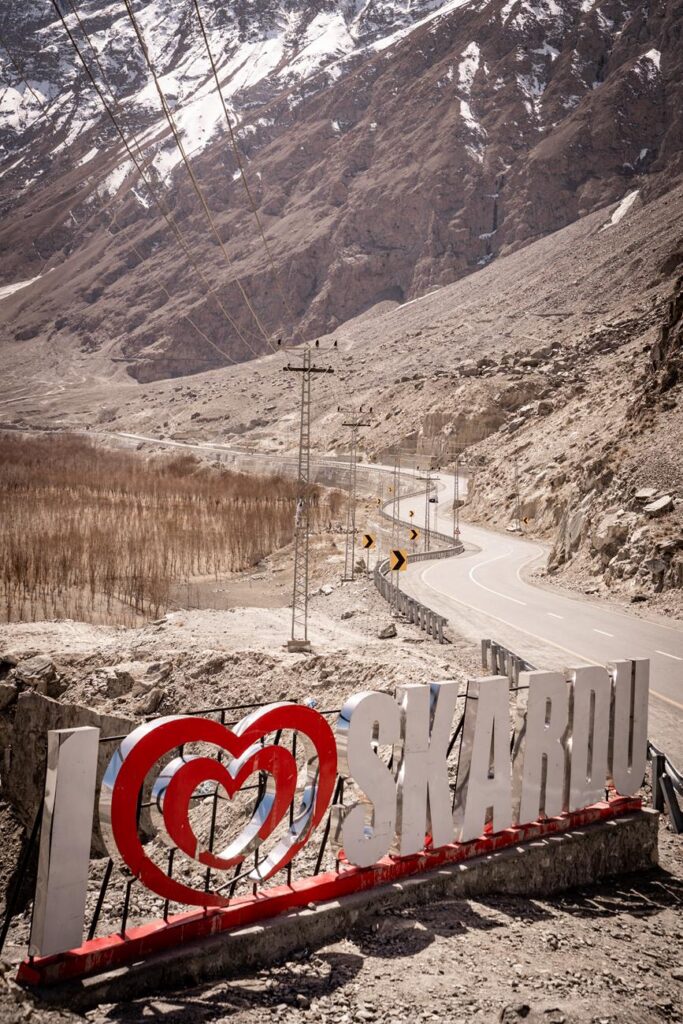
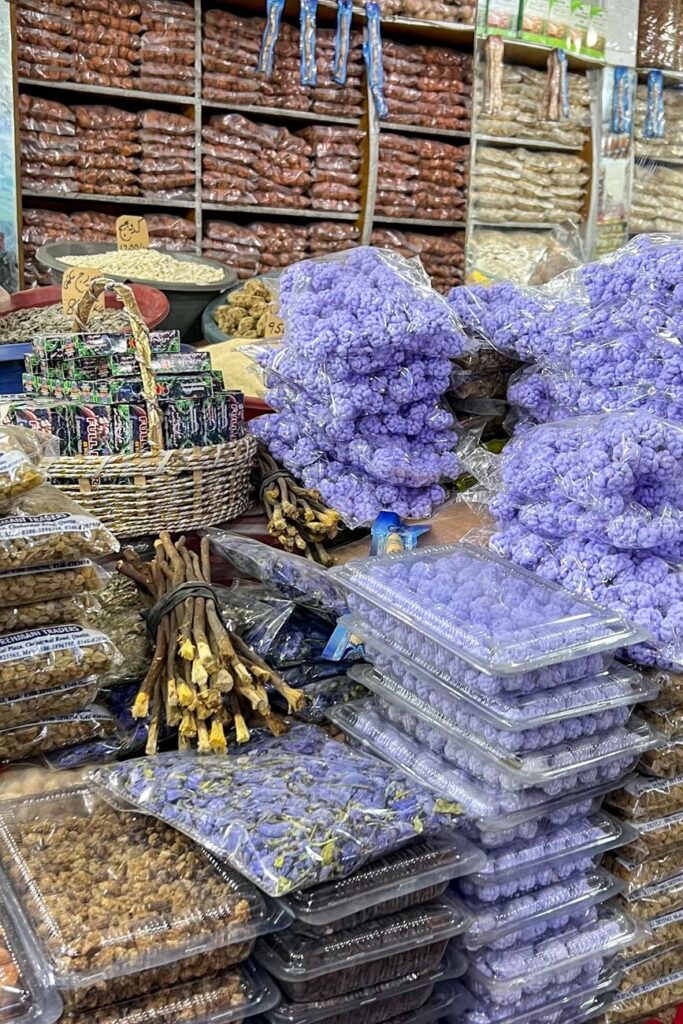
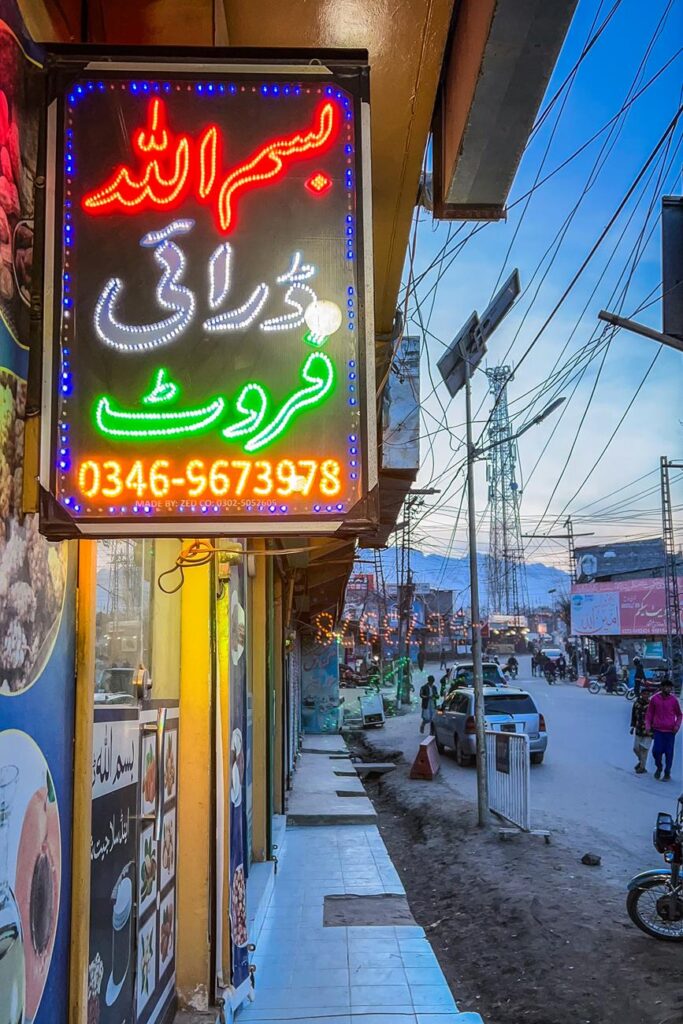
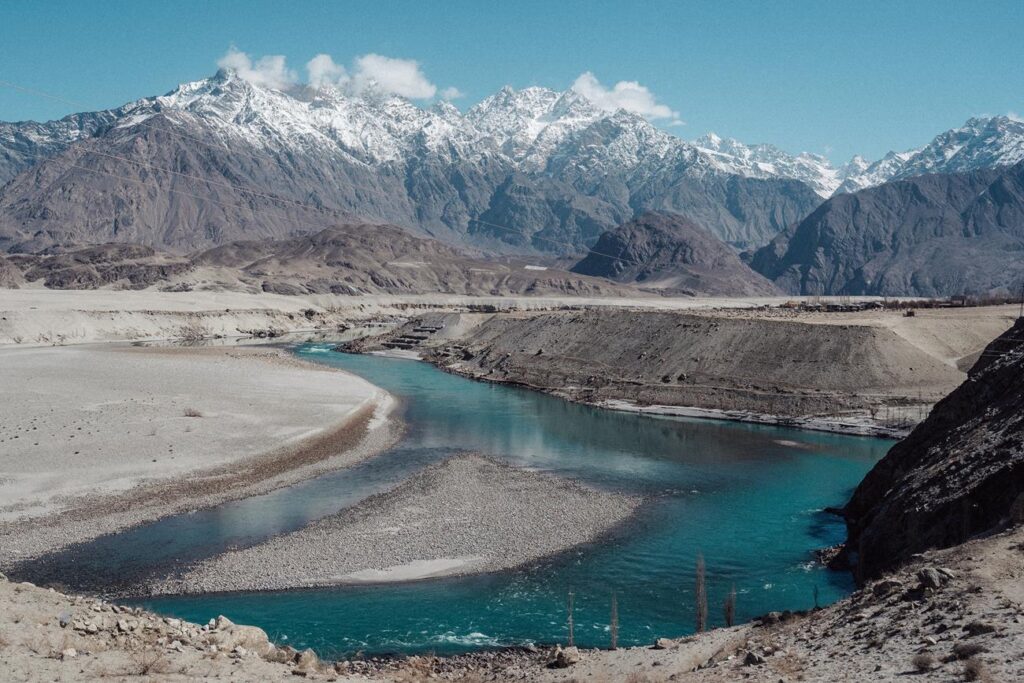
Sarfaranga Cold Desert
Sarfaranga Desert is one of the two cold deserts in Skardu that I managed to visit. It is located at an altitude of 2460 meters above sea level, and when driving to Shigar, it is impossible to miss it. The desert is surrounded by mountains, making an incredible impression, and the calm in the middle of the dunes is almost unreal. There is also a complete lack of network coverage.
It’s worth taking a jeep tour of the desert; for me, it was quite an extreme adventure that I will probably remember for years to come.
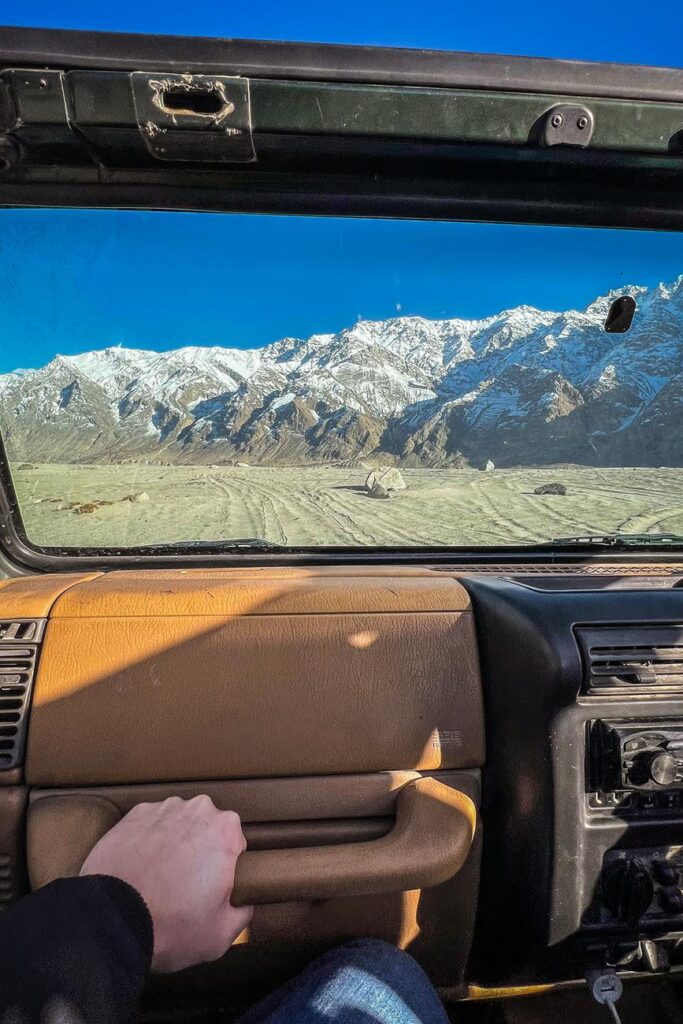
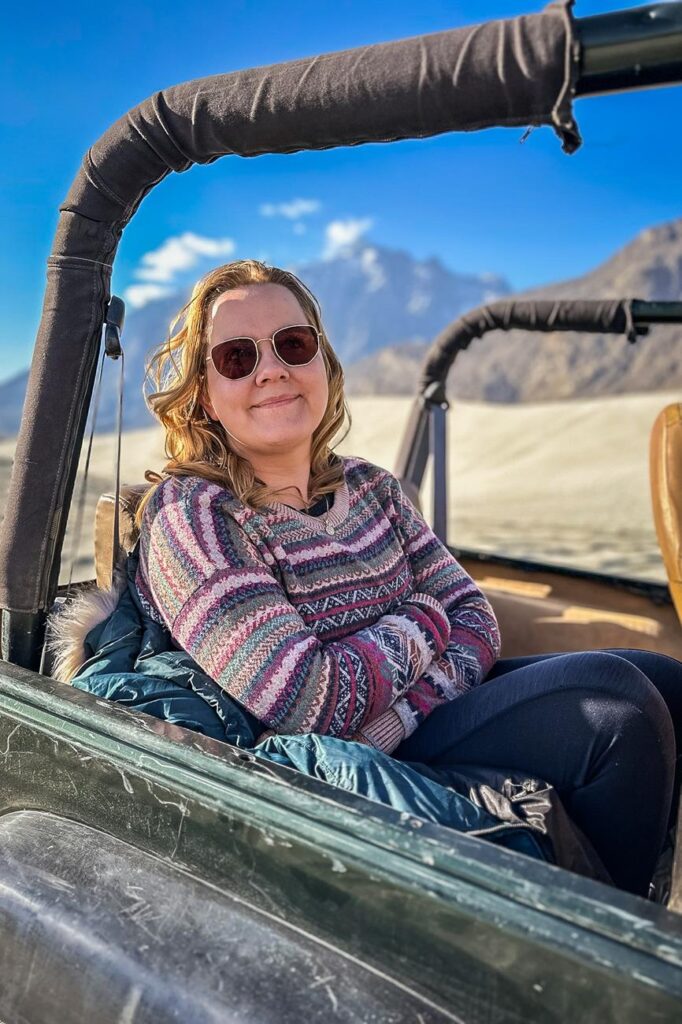
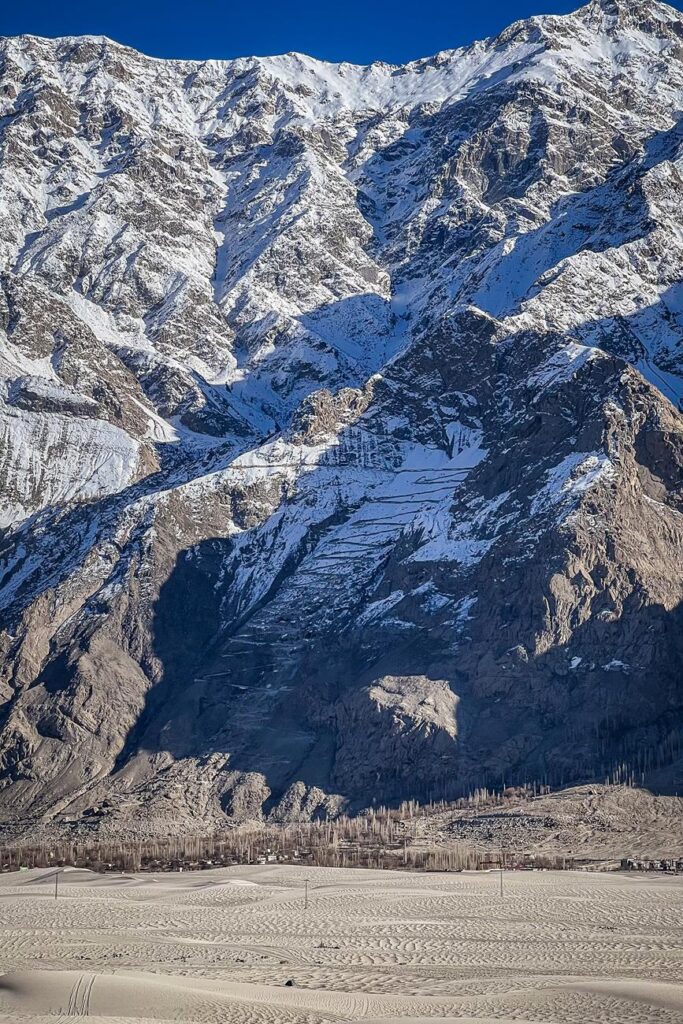
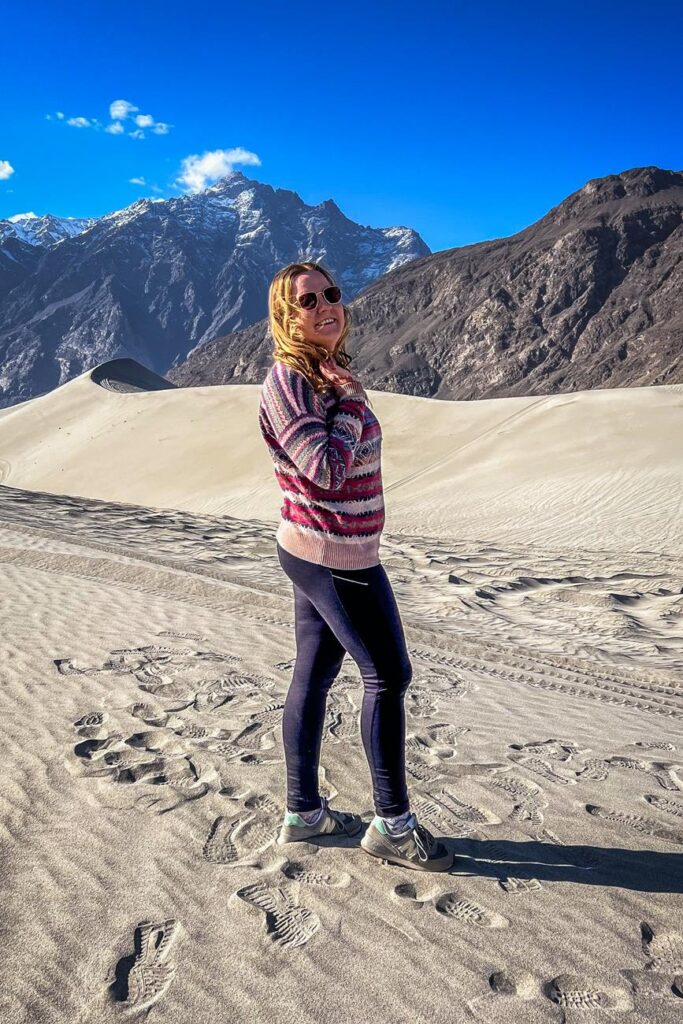
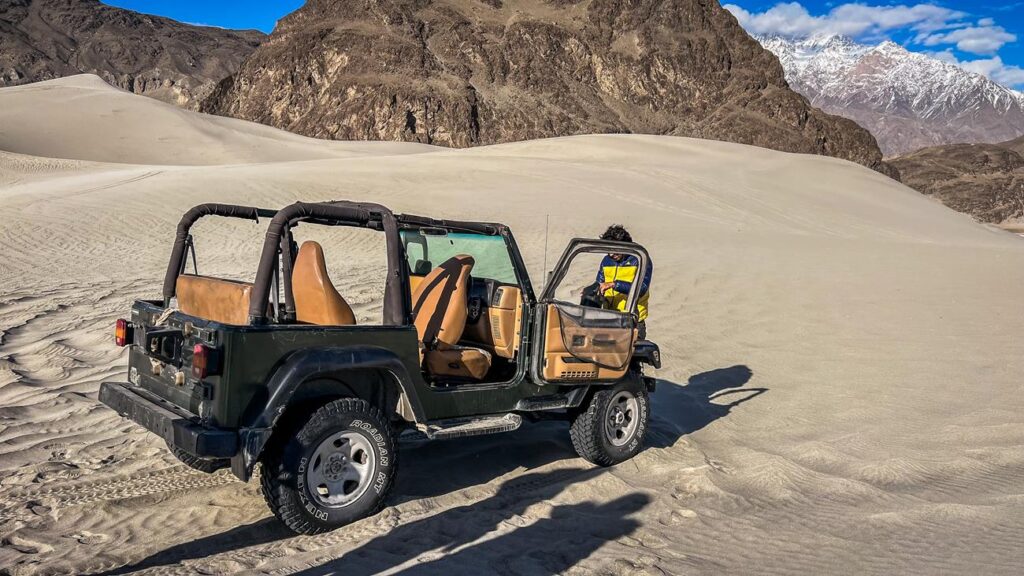
Katpana Cold Desert
Katpana Desert is another cold, high-altitude desert in the area. Temperatures range from +27°C to -25°C, depending on the season and the day. In the desert, you can see huge sand dunes, which in winter are sometimes covered with snow. It is one of the highest deserts in the world. It is located at an altitude of 2,226 meters above sea level. The desert is really large, but the area near Skardu airport, near Katpana Lake, is most often visited by tourists.
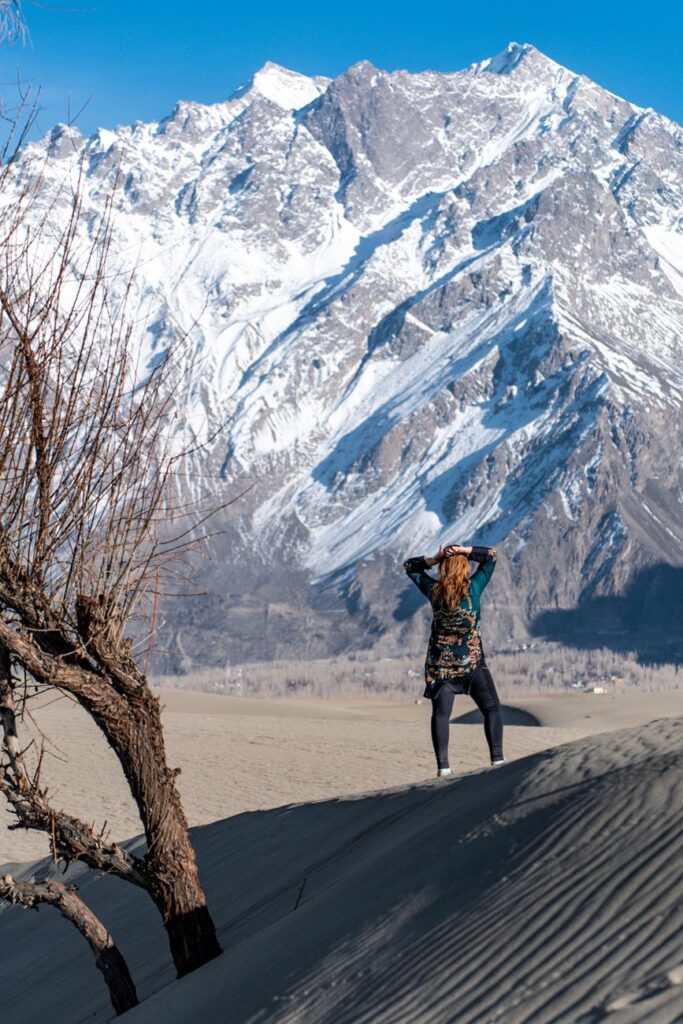
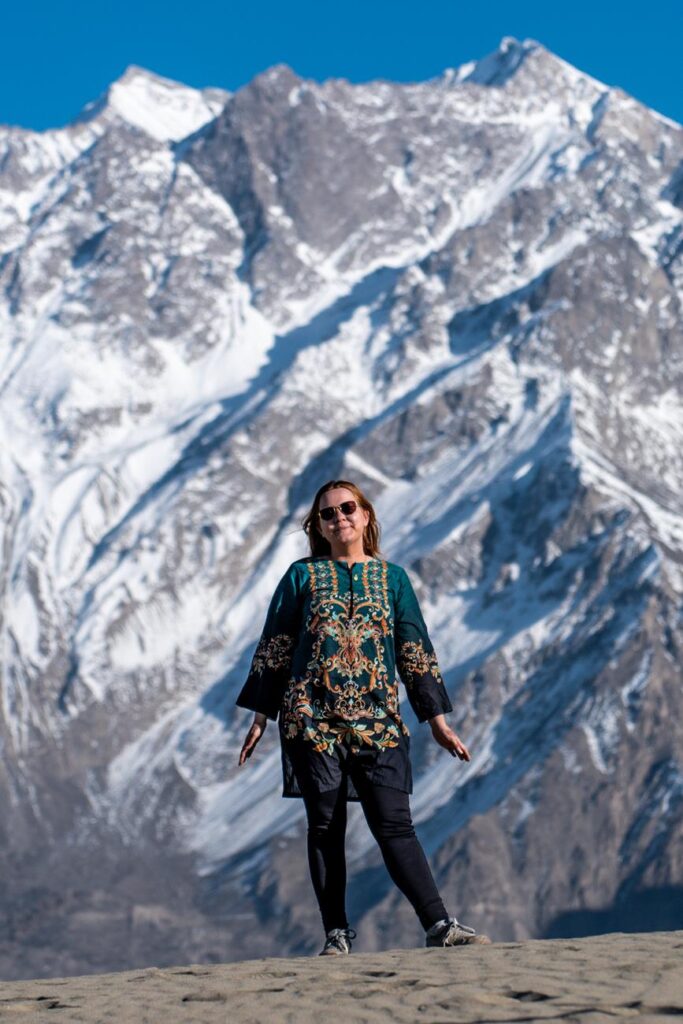
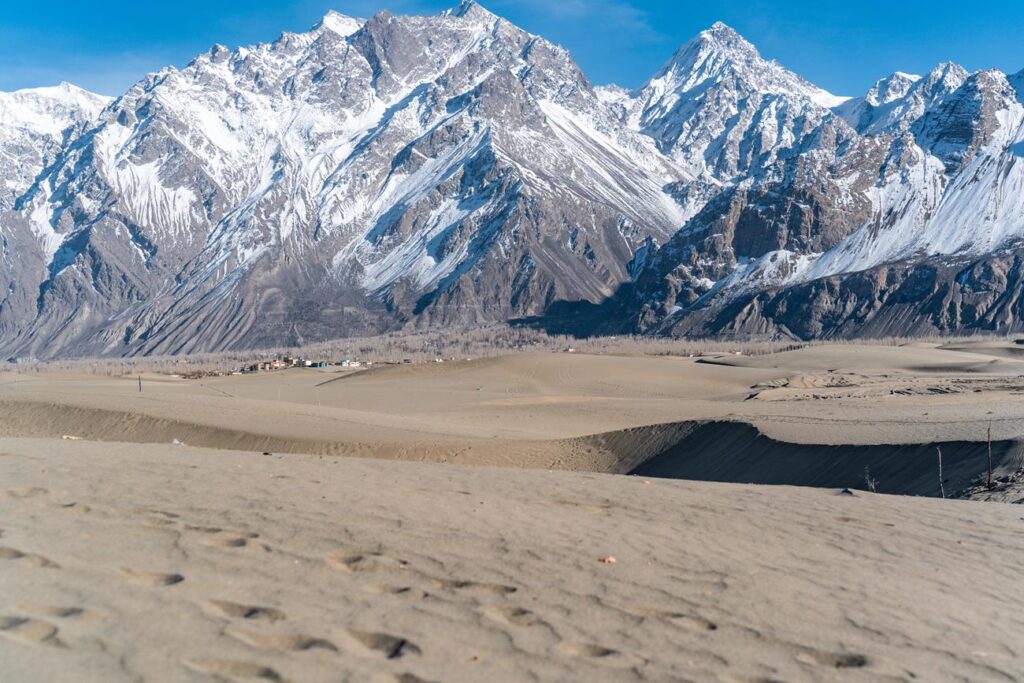
Manthokha Waterfall
Manthokha Waterfall is located in the Kharmang Valley, in the Gilgit-Baltistan region. The waterfall is about 55 meters high, but it is not a natural phenomenon – it was created by humans. It is surrounded by green pastures and streams, amidst the high Karakorum mountains. It looks really beautiful.
Fun fact: during the season (summer), trout are served in the nearby restaurant, and visitors can also visit the fish farm.
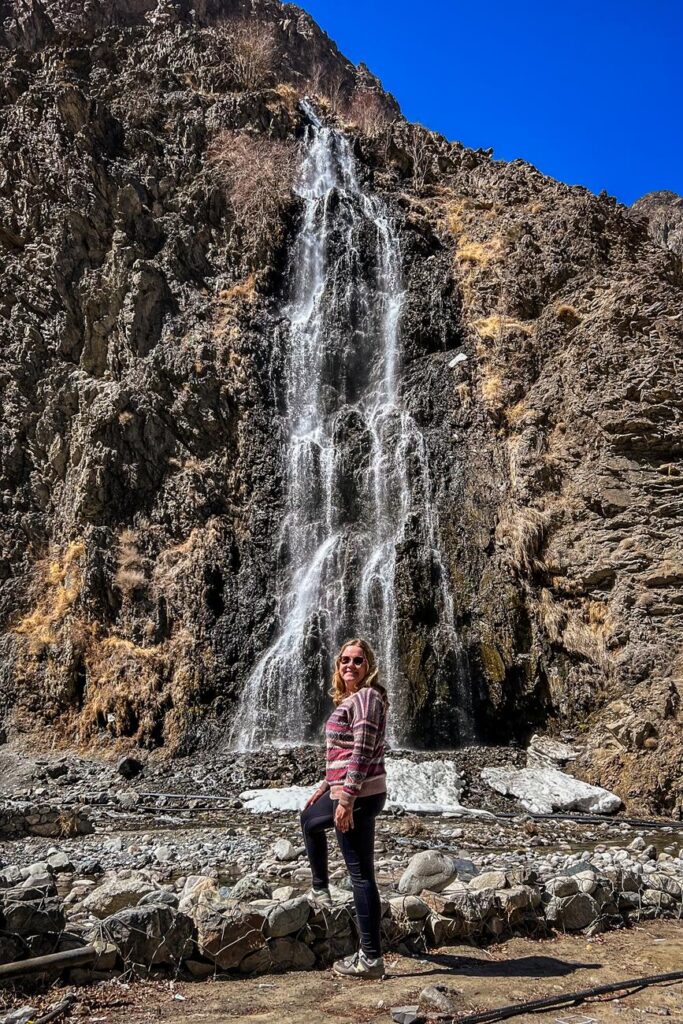
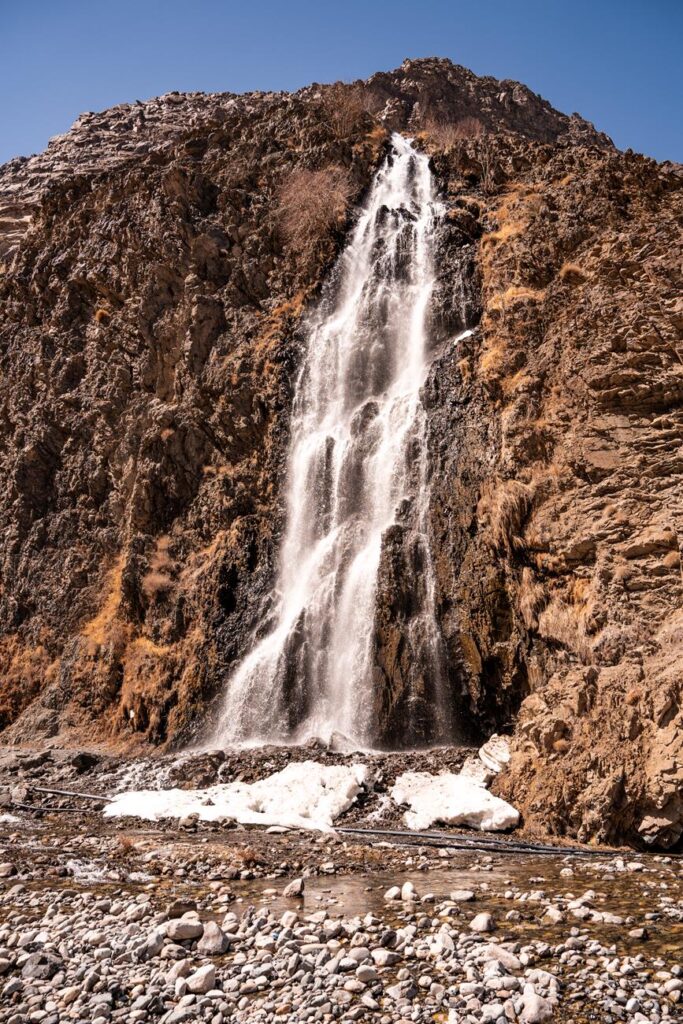
Chocolate Rocks
The Chocolate Rocks turned out to be a picturesque stop on the route through the Gilgit-Baltistan region. As the name suggests, they look like they’re made of chocolate! It may not be an attraction worth traveling for, but it’s definitely worth planning your route to include them 😊
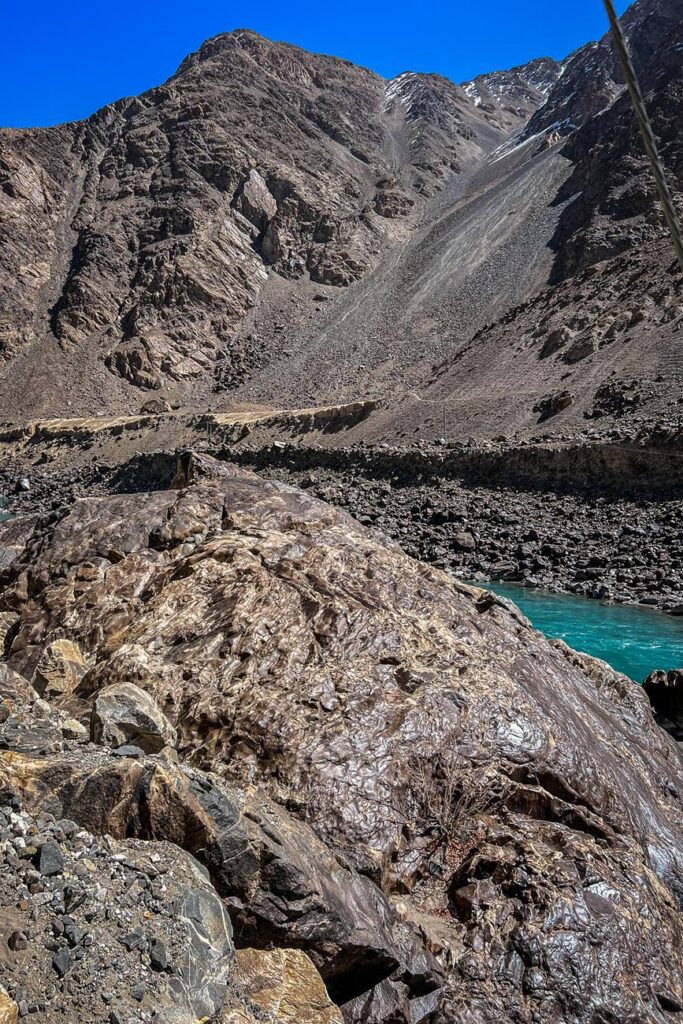
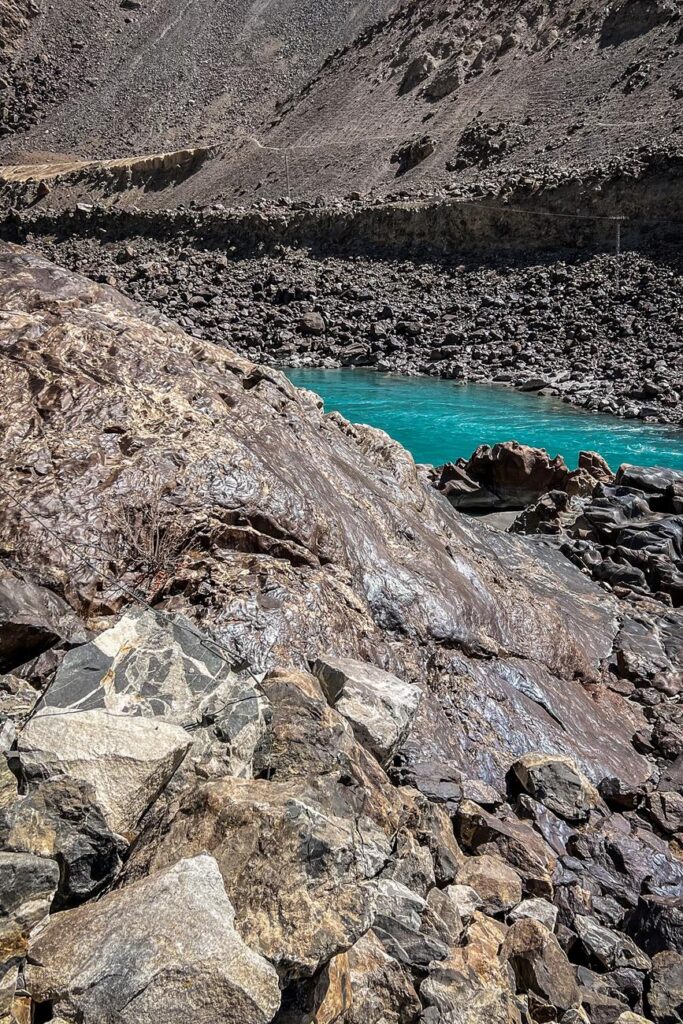
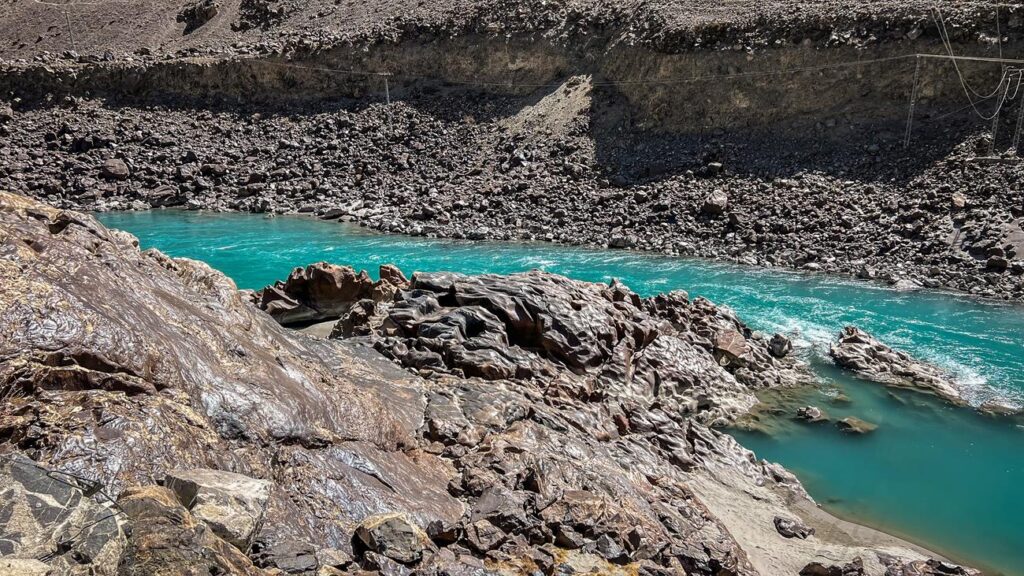
Kachura Lakes: Upper Lake
The Kachura Lakes are located at an altitude of 2500 meters above sea level and consist of the Upper Kachura Lake and the Lower Kachura Lake, also known as Shangrila Lake (I’ll write about it below). These picturesque lakes have crystal-clear water. The upper lake is 70 meters deep. In summer, the temperature is around 15°C, and in winter, the surface freezes. I personally recommend a boat trip on the lake – it’s a really great experience.
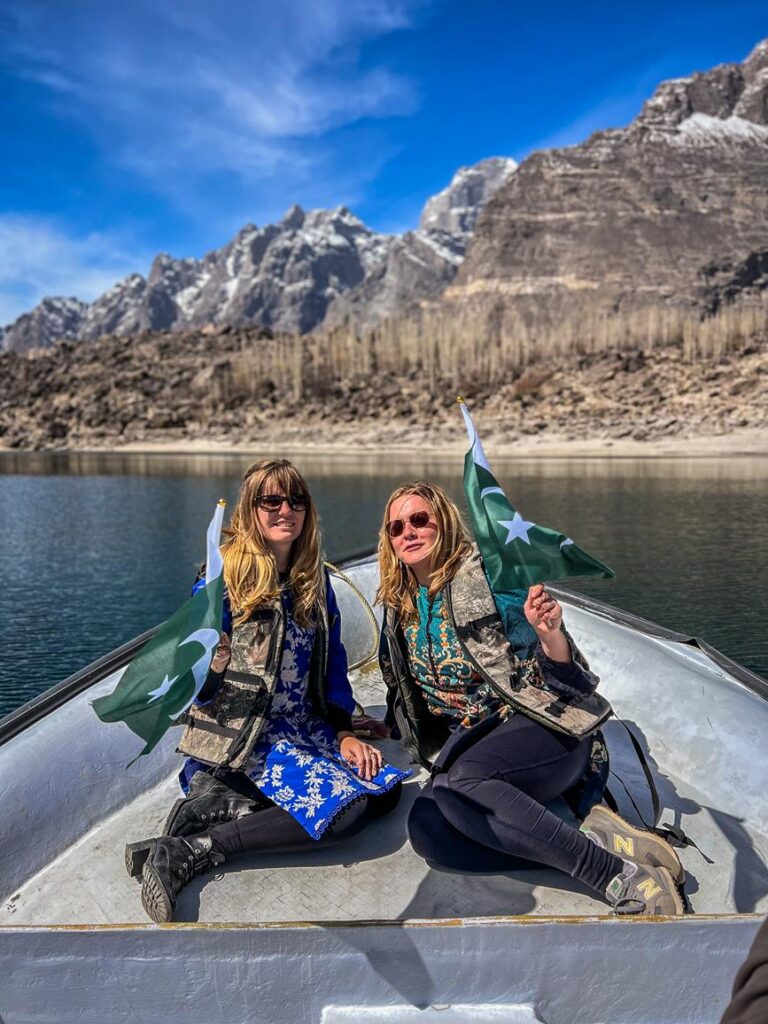
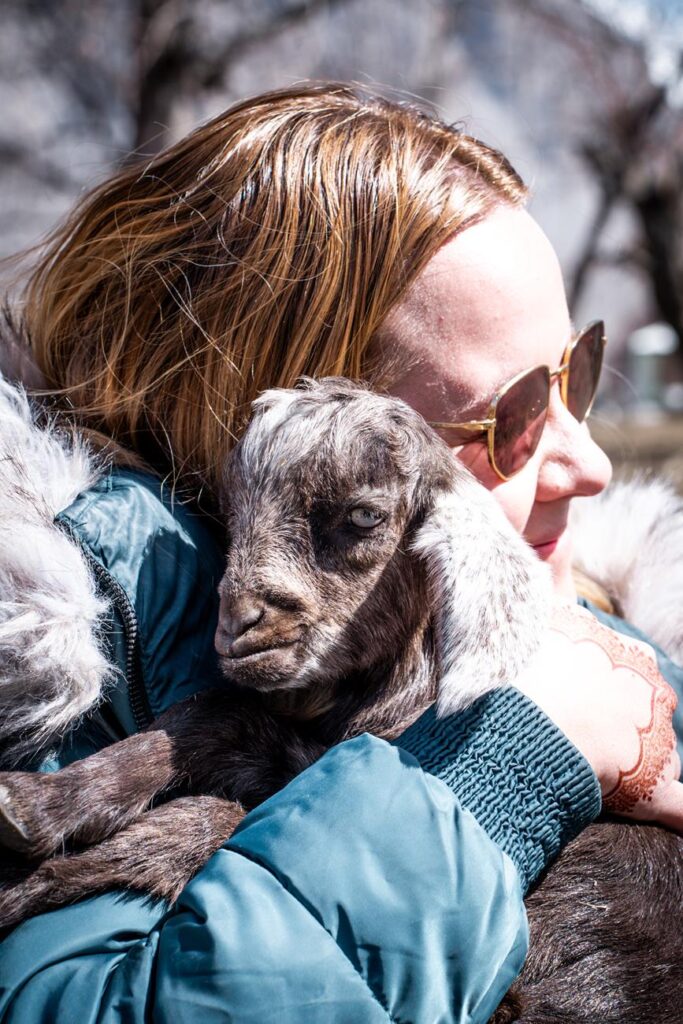
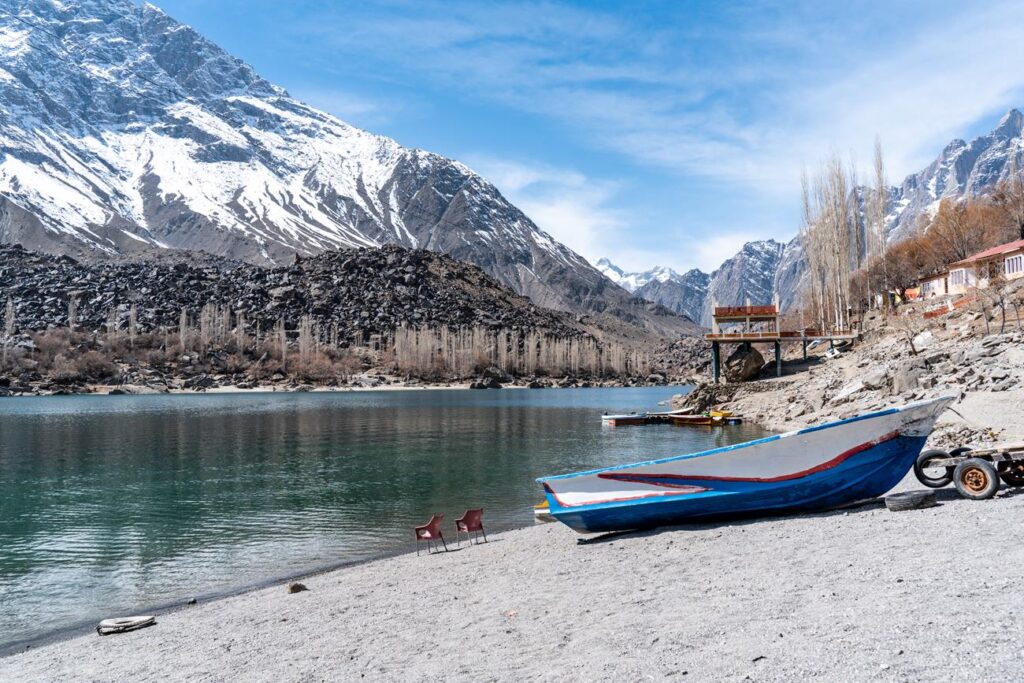
Lower Kachura Lake, also known as Shangrila Lake
Lower Kachura Lake, also known as Shangrila Lake, due to the resort established there in 1983. The lower lake has a completely different climate than the one just above. Interestingly, its name comes from Shangri-La, the idyllic Himalayan paradise described in the 1933 novel “Lost Horizon” by British writer James Hilton. Shangri-La, in Tibetan, means “paradise on earth”.
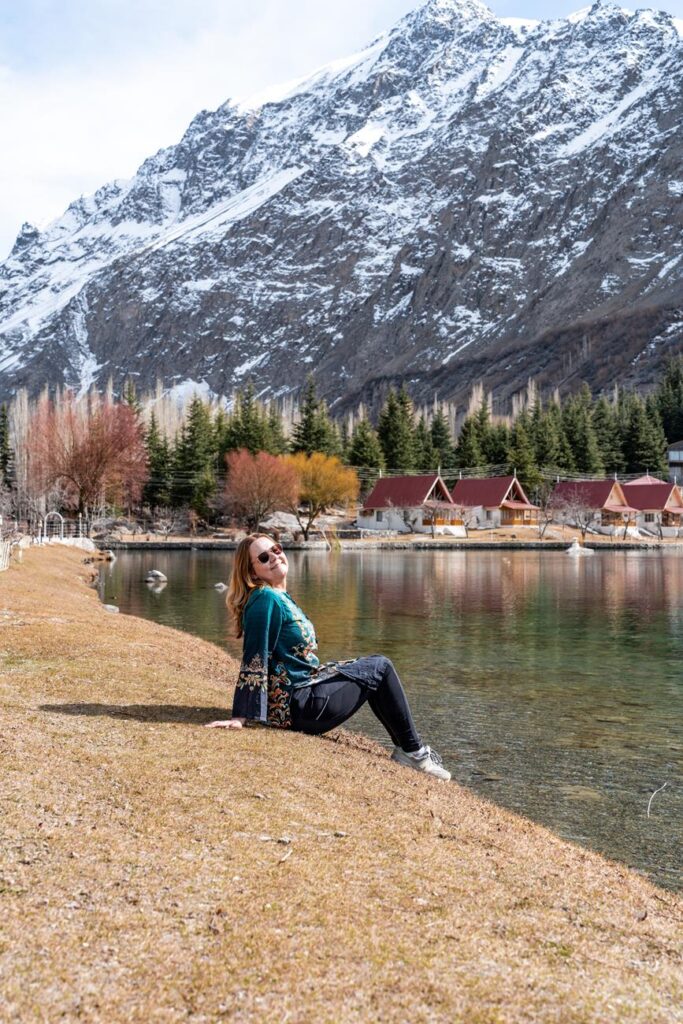
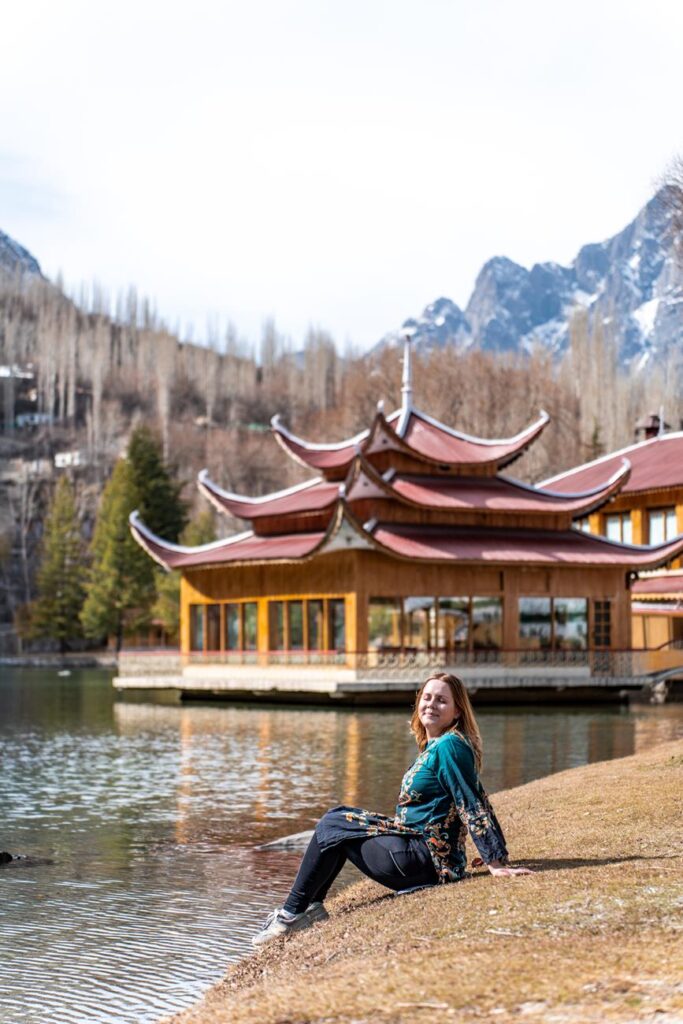
Shigar Fort
It is also called the Fort on the Rock (it was set on a huge rock), an ancient fortress in the city of Shigar. It was built in the 17th century by the Raja of the Amacha dynasty.
After thorough renovation by the Aga Khan Cultural Service Pakistan, the fort was transformed into a museum and luxury hotel managed by Serena Hotels. It is a unique place, located in the picturesque surroundings of the Karakorum range, which is worth visiting when in the area. The guide in the fort tells really interesting stories and is extremely friendly.
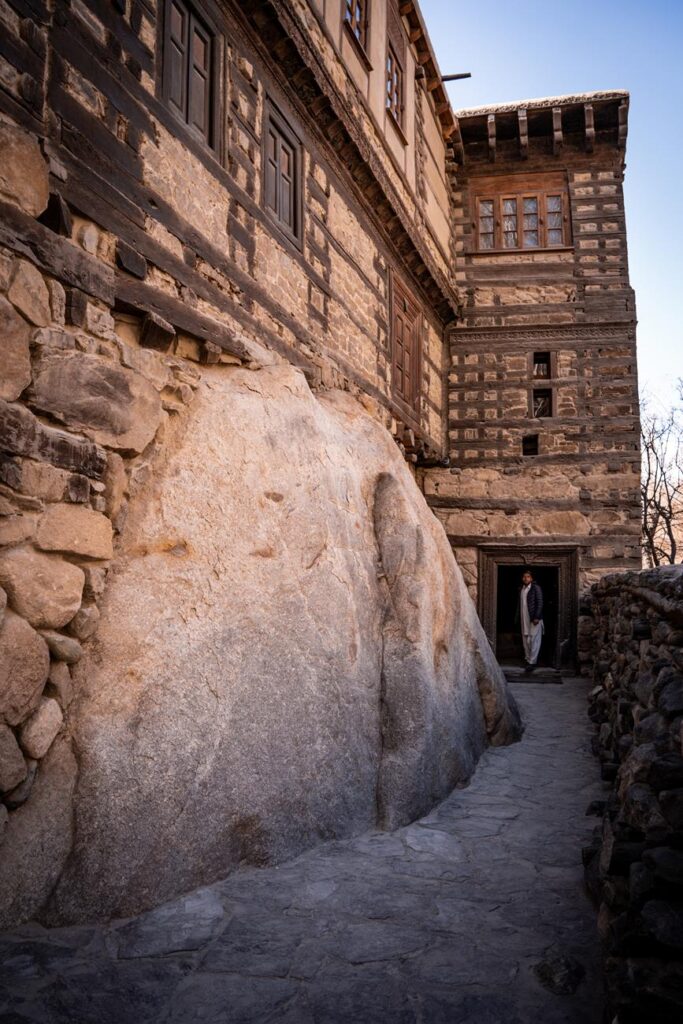
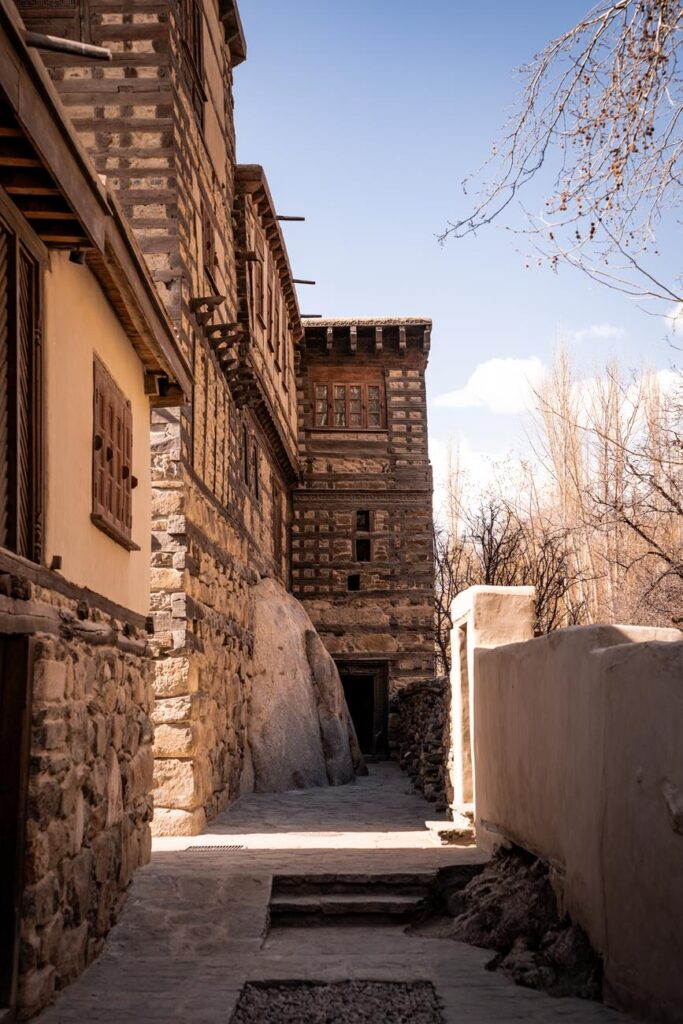
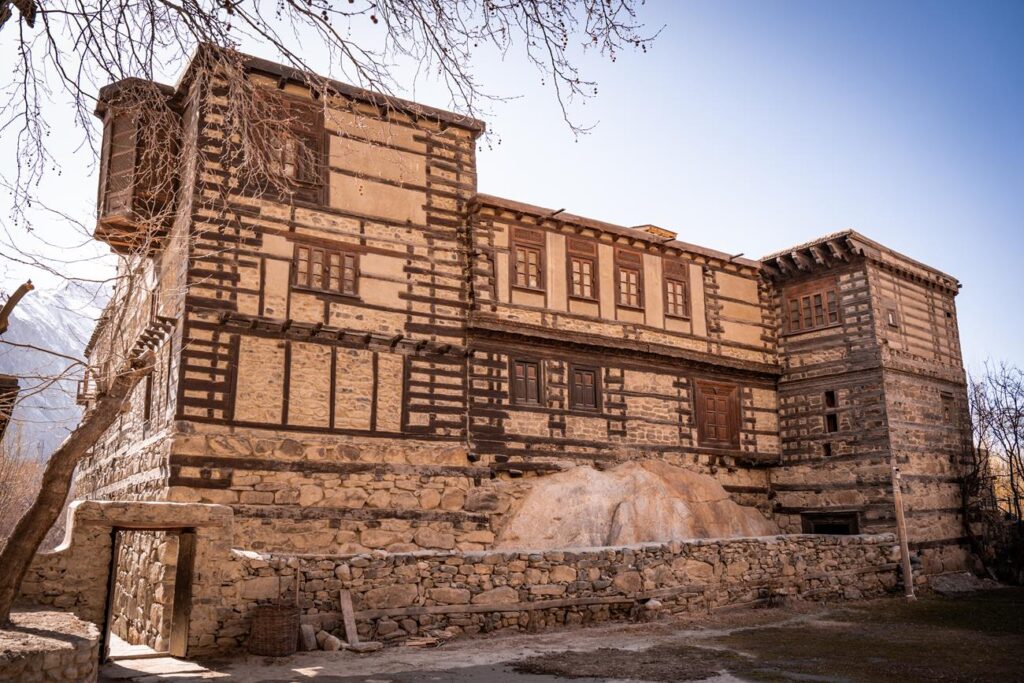
What to see in Pakistan?
Pakistan is a huge country, and seeing everything is practically impossible. Therefore, in our journey, we focused only on selected points in the northern part of the country. We also found time to admire the views, have long conversations about customs, culture, but also about life in Pakistan.
In my opinion, exploring such a distant country with a different culture with a local guide is much more interesting because I just like to know a lot. And although I can read about attractions in a guidebook, a book won’t answer my questions. Thanks to exploring with Gosia and our Pakistani guide, we knew which dishes not to try (because they would be too spicy for us), we could learn how Pakistanis approach issues such as religion, ask them about how the education system works, how important family is to them, and many other things. To be more precise, we literally asked about everything.
You can find more posts about Pakistan here: